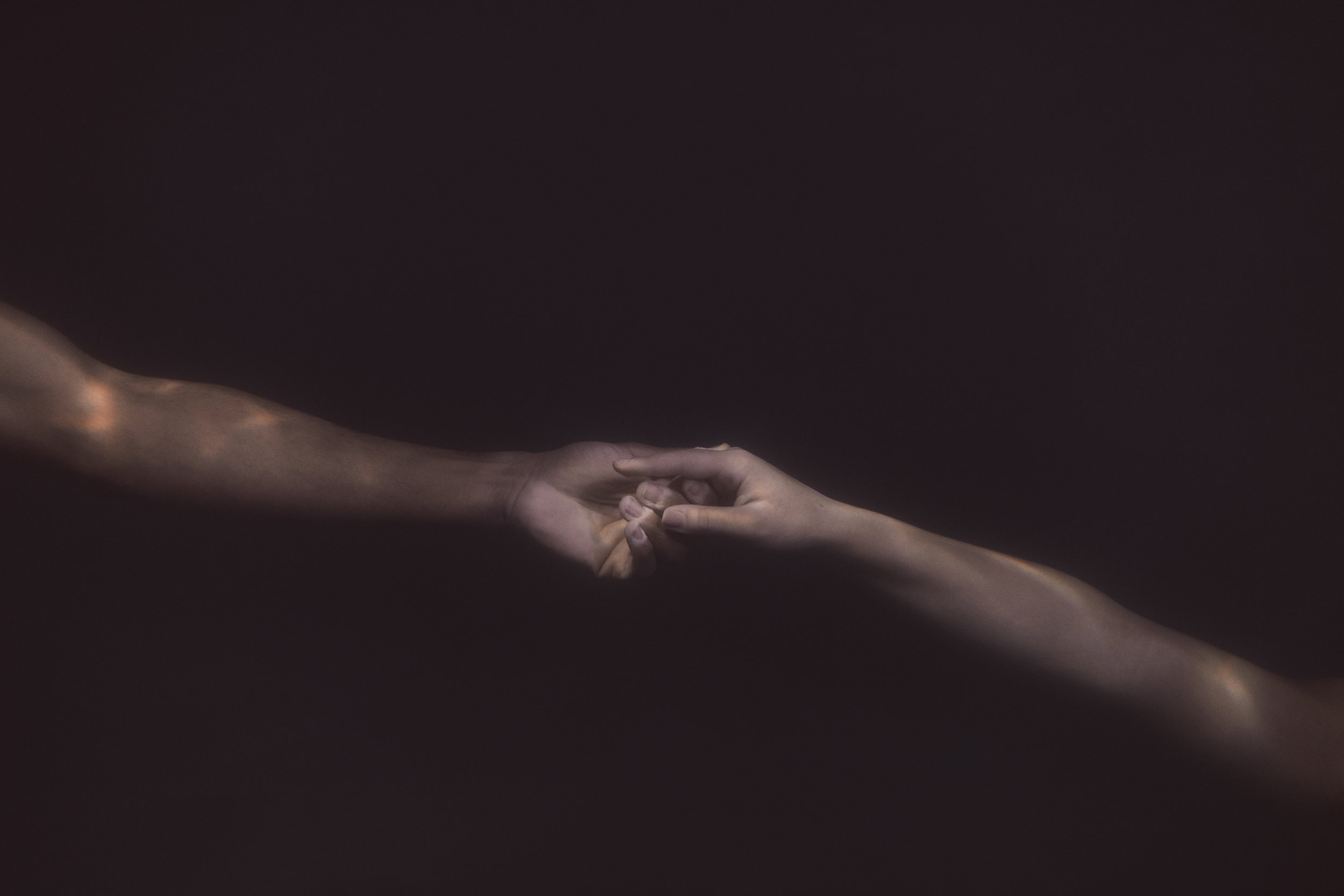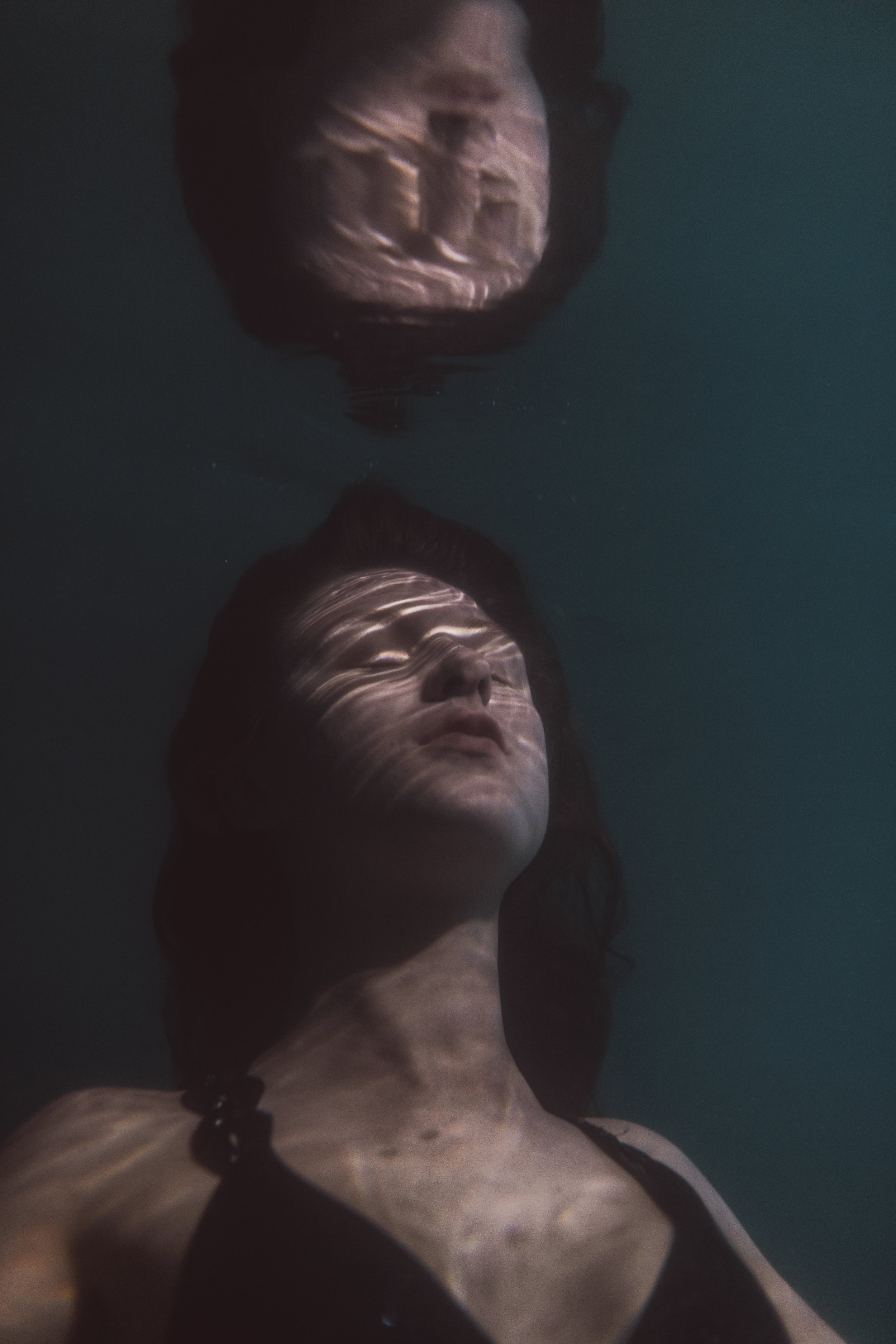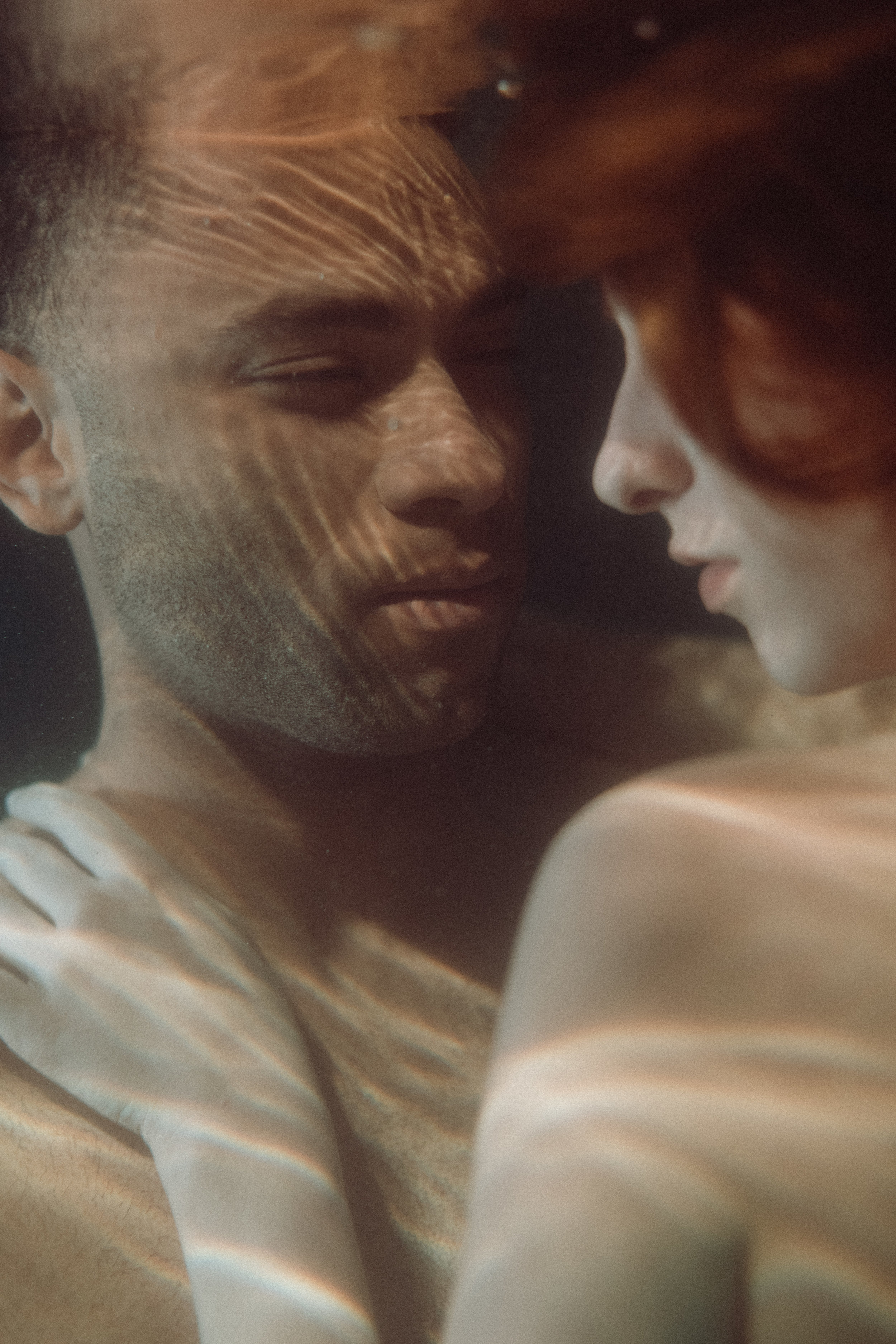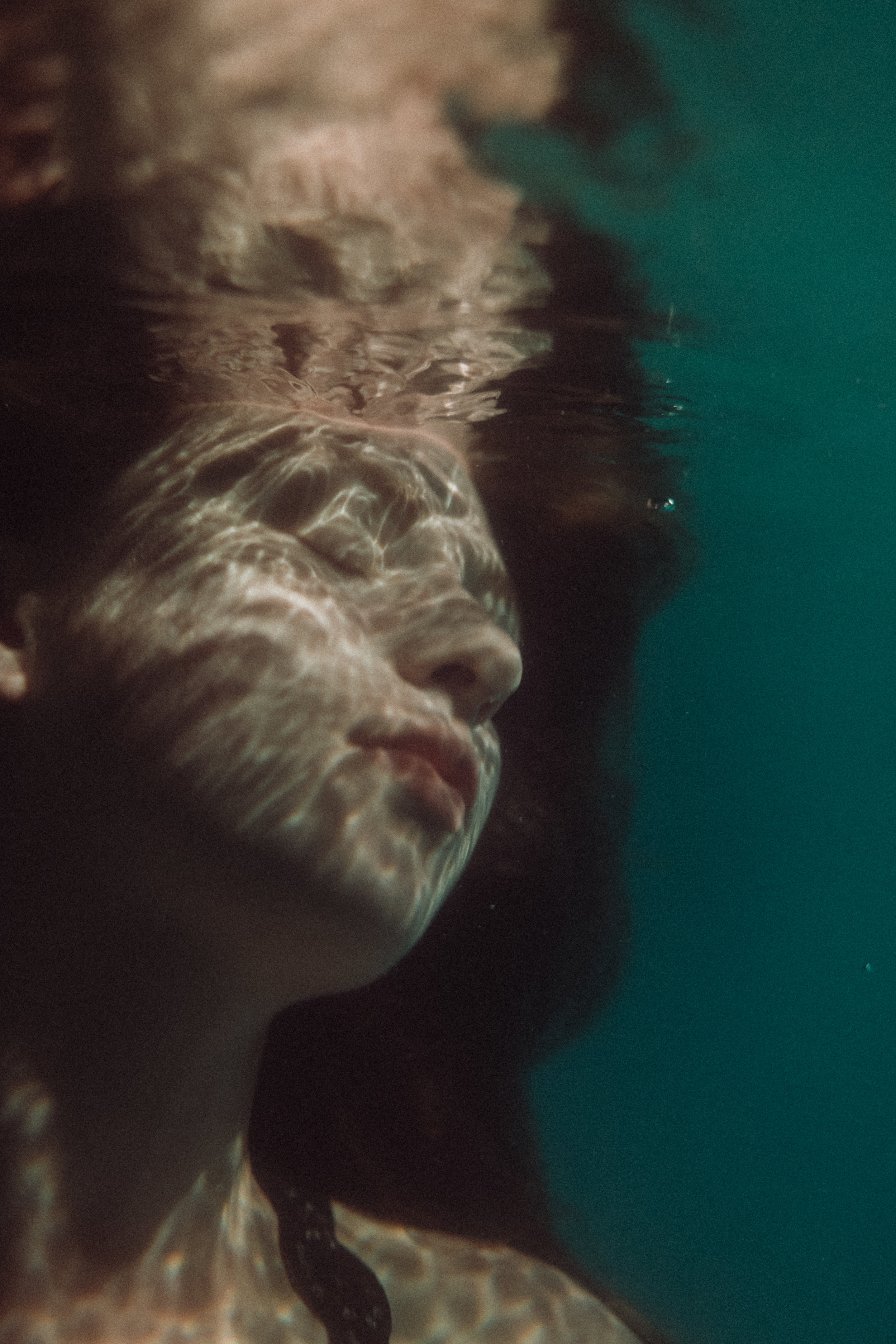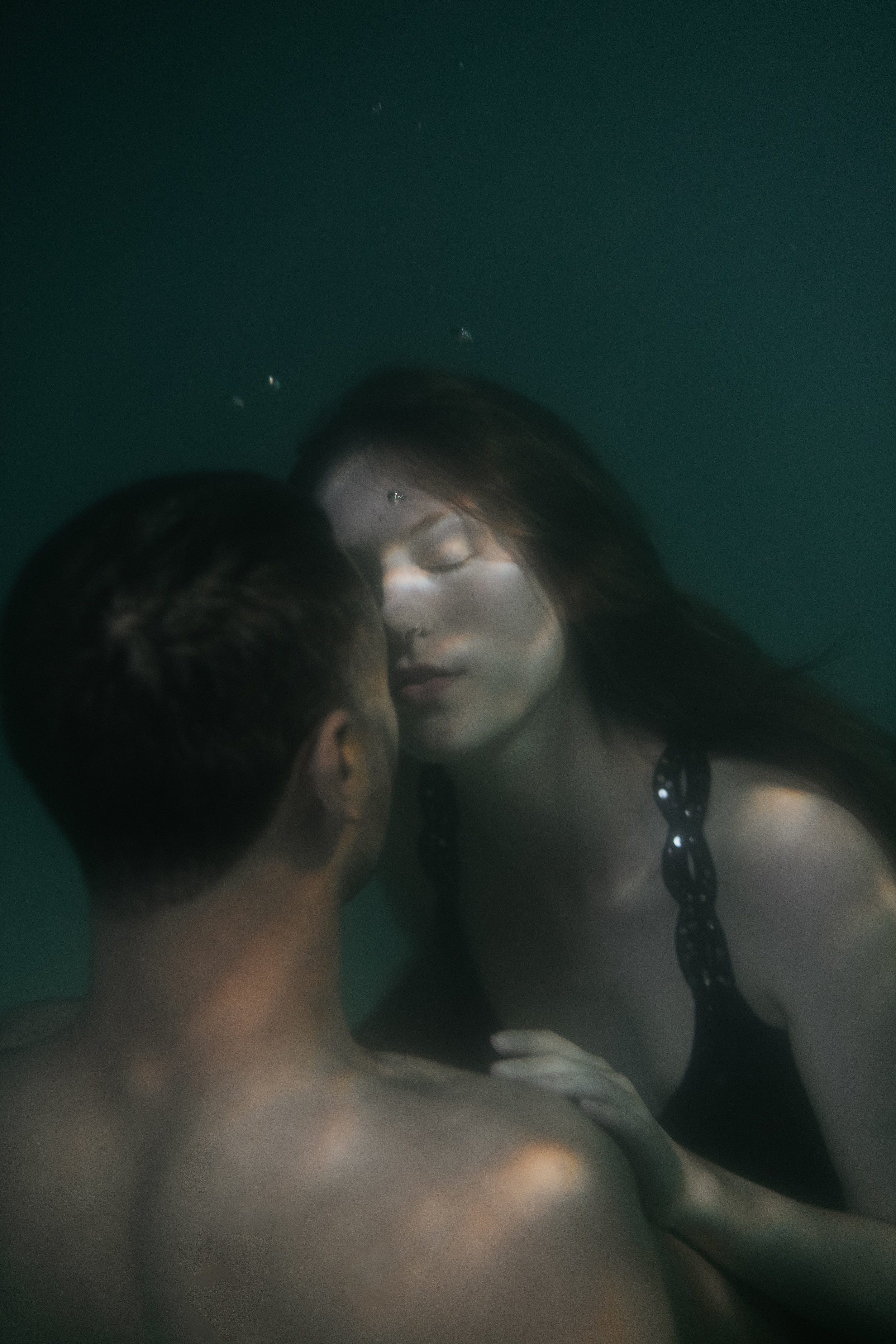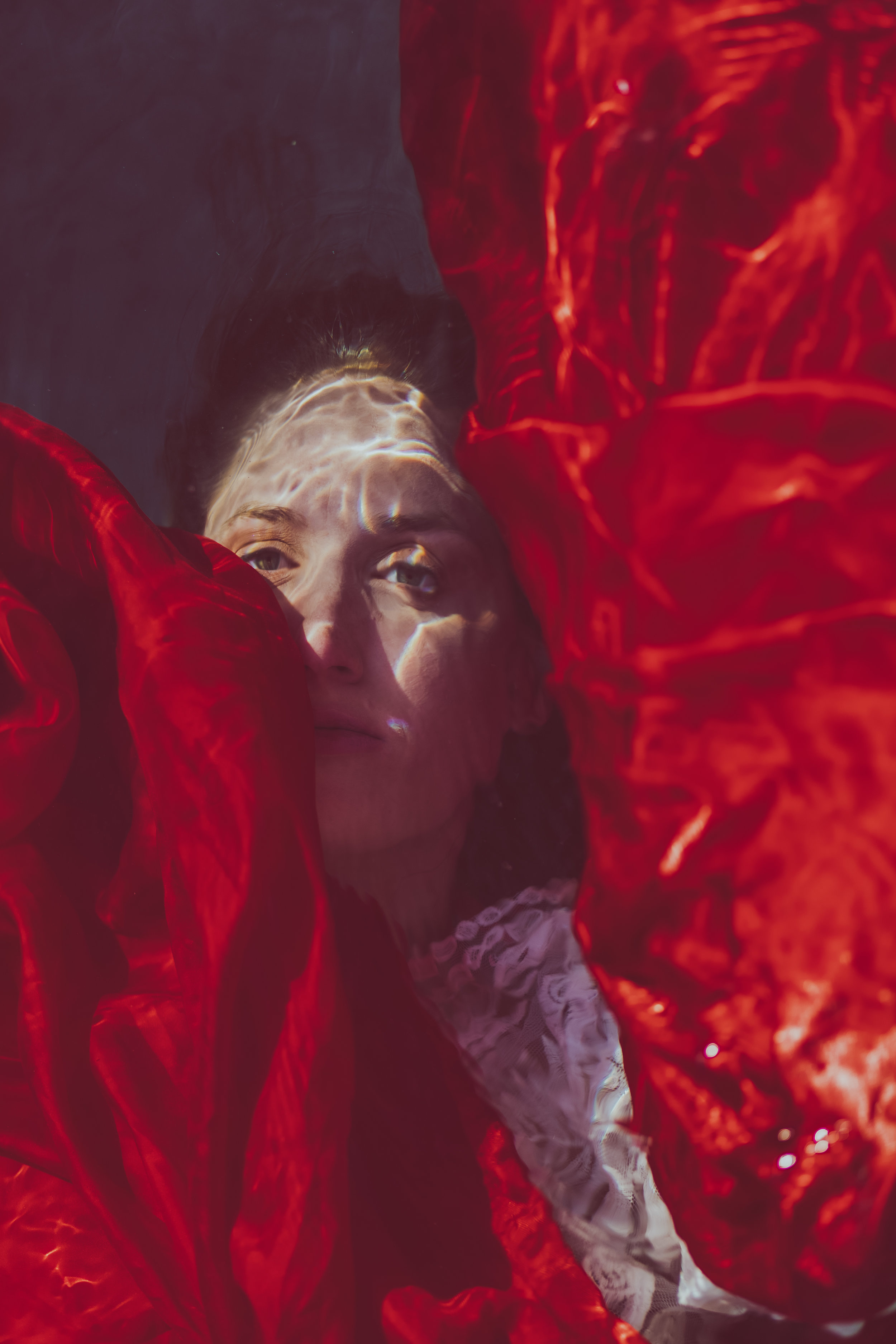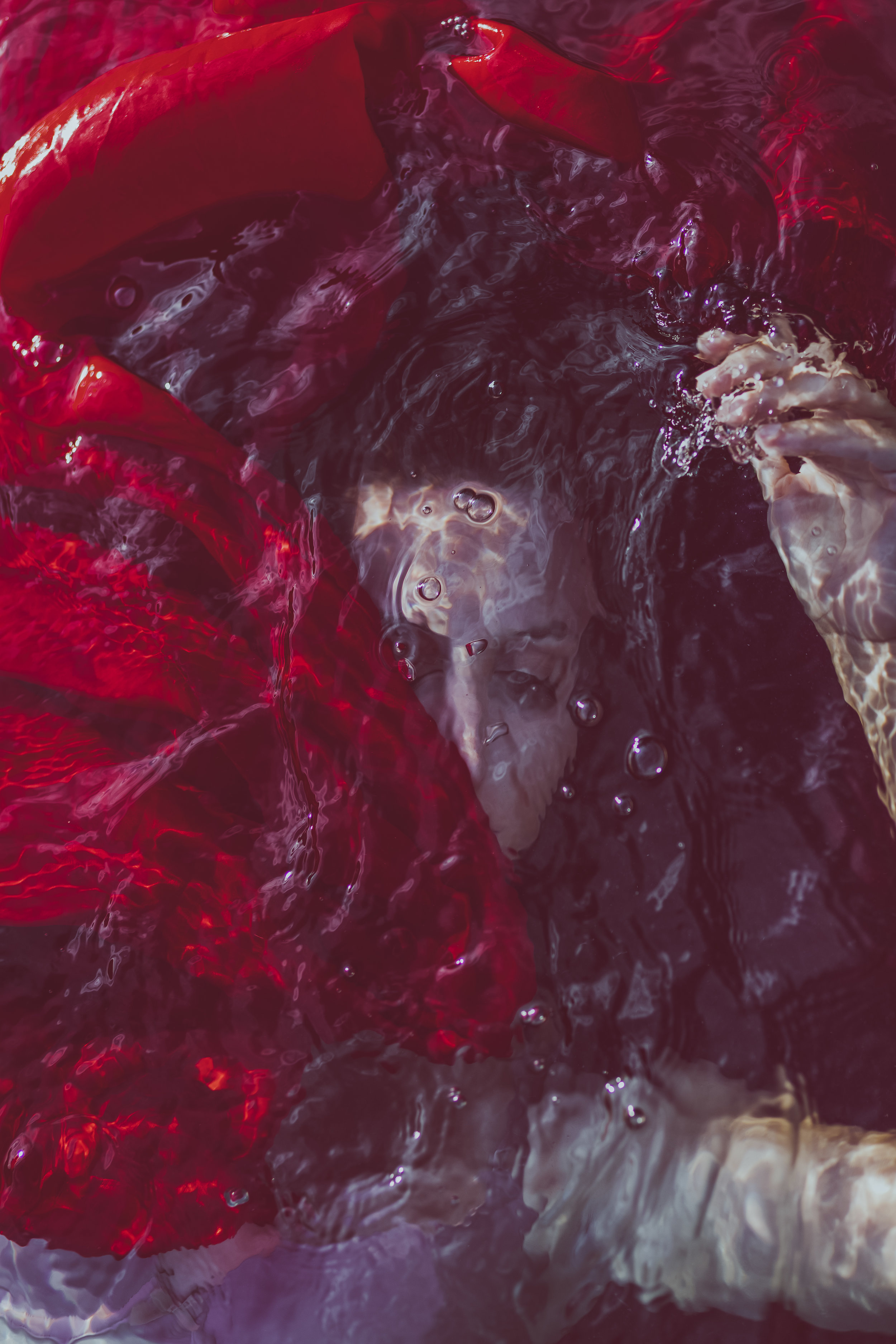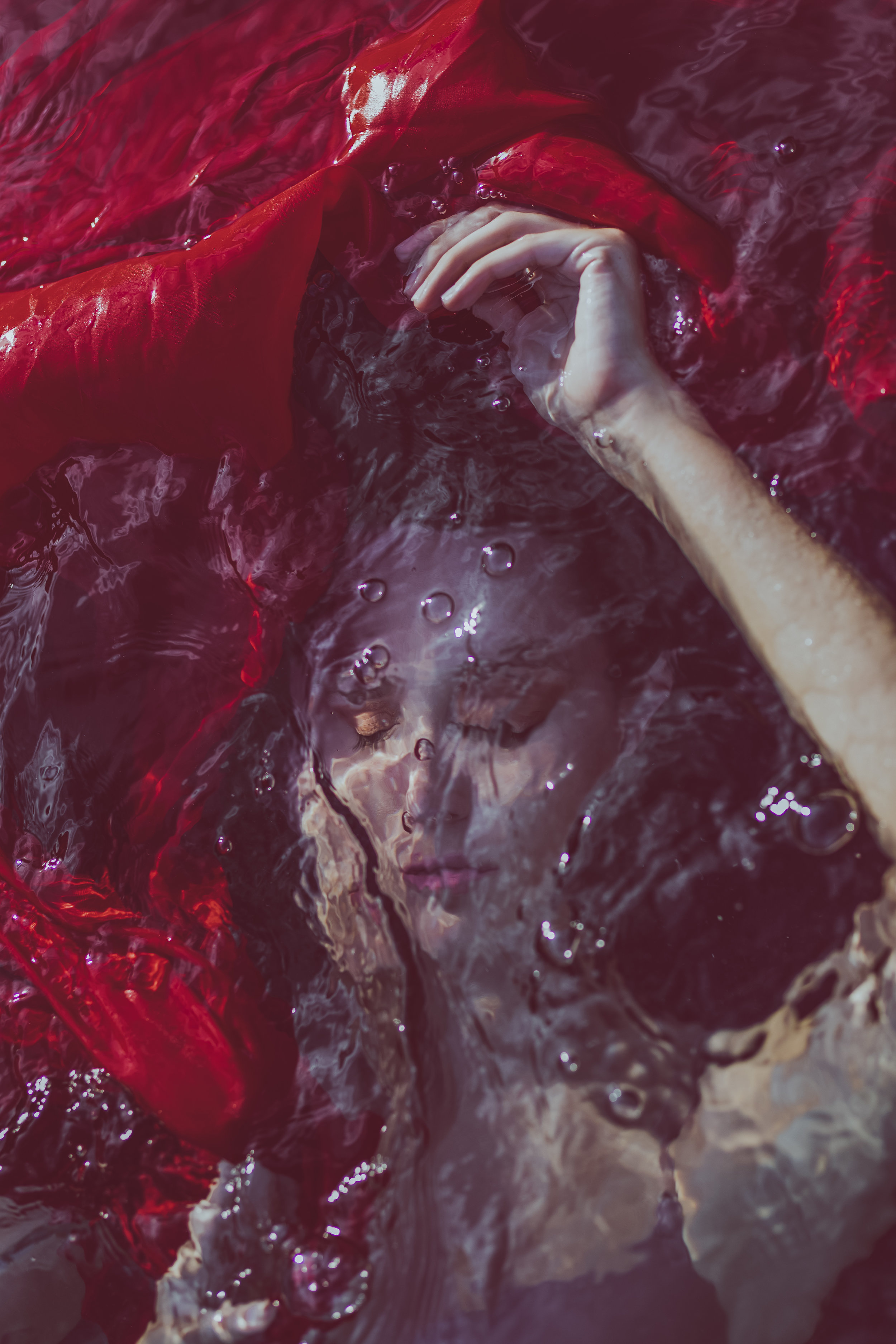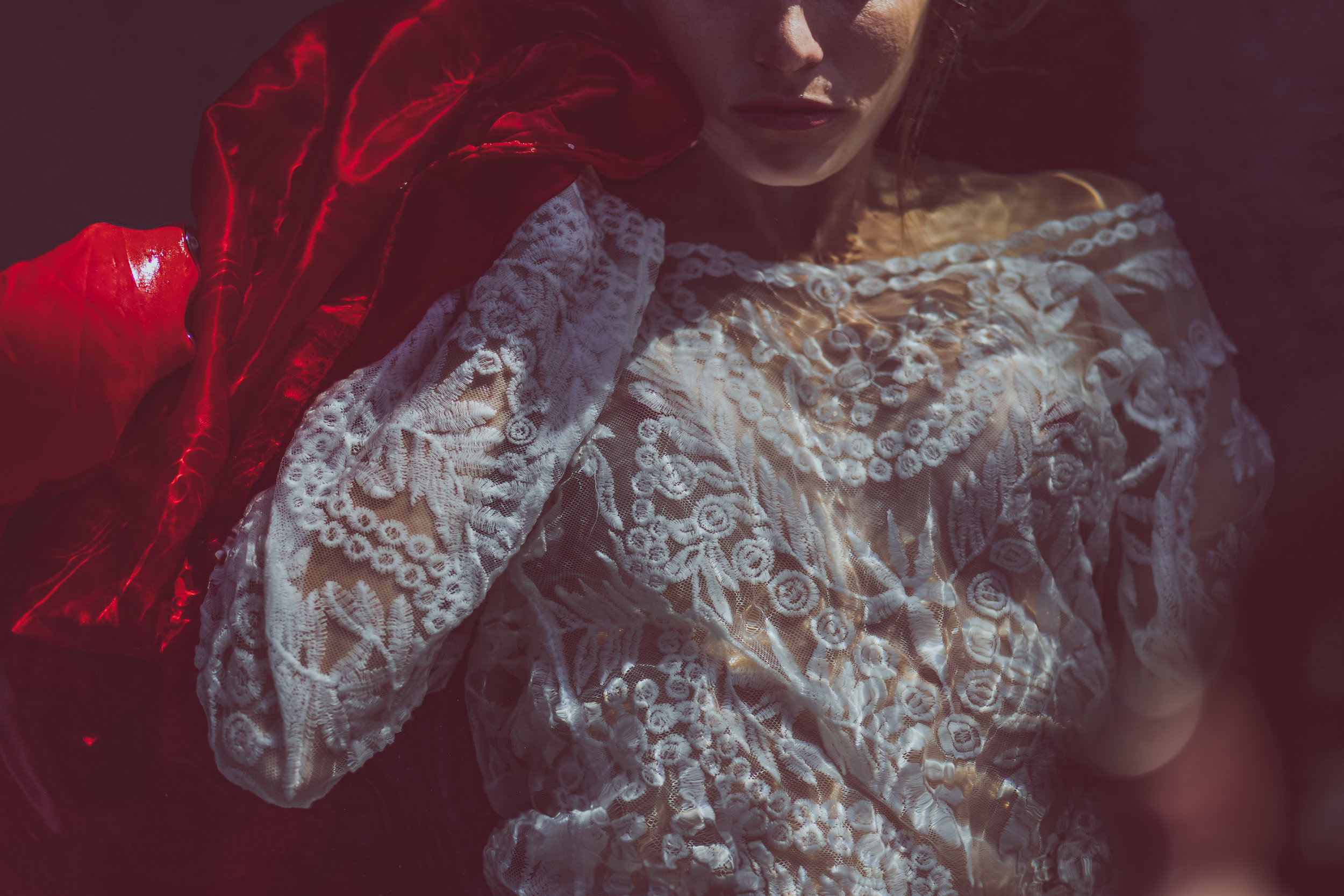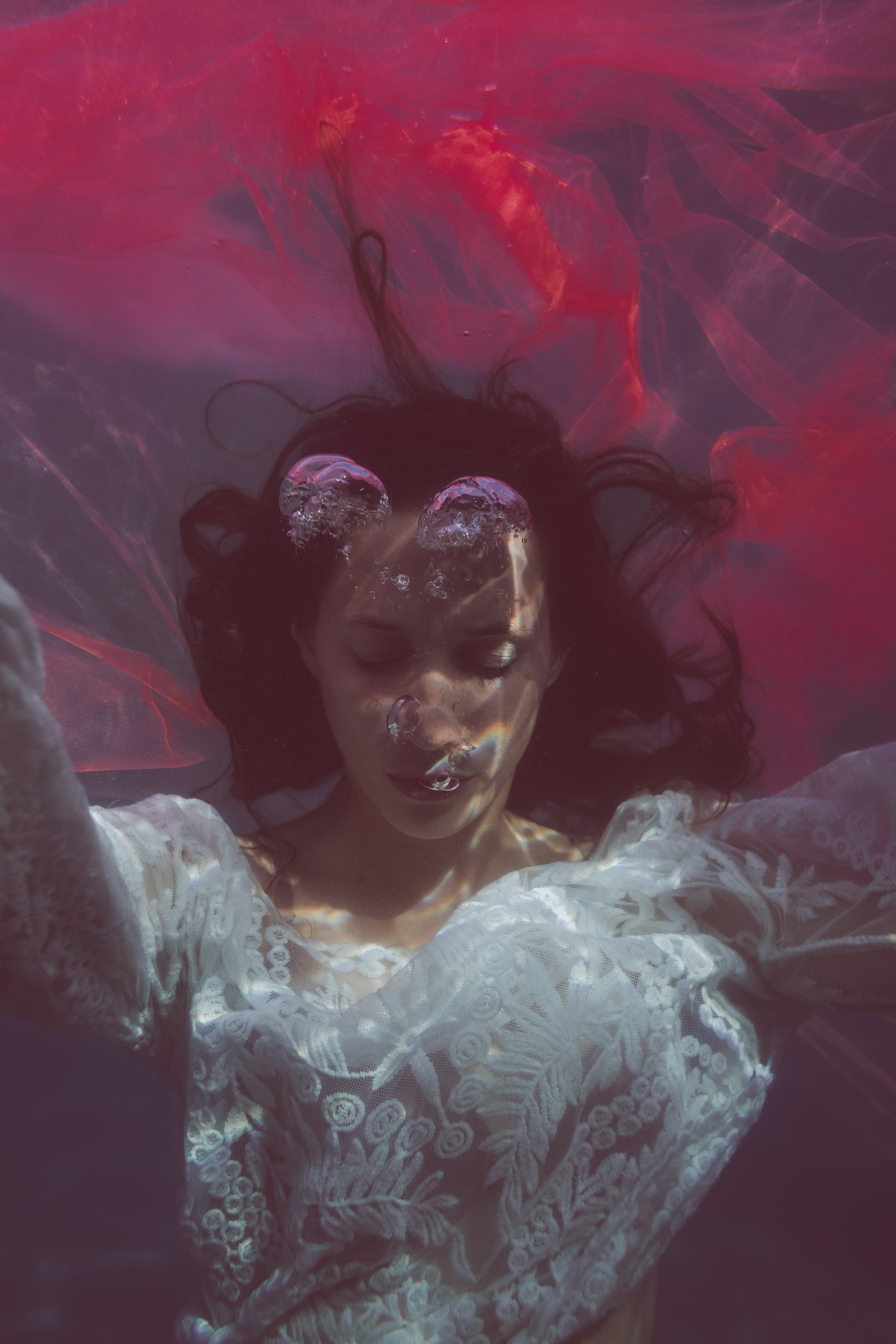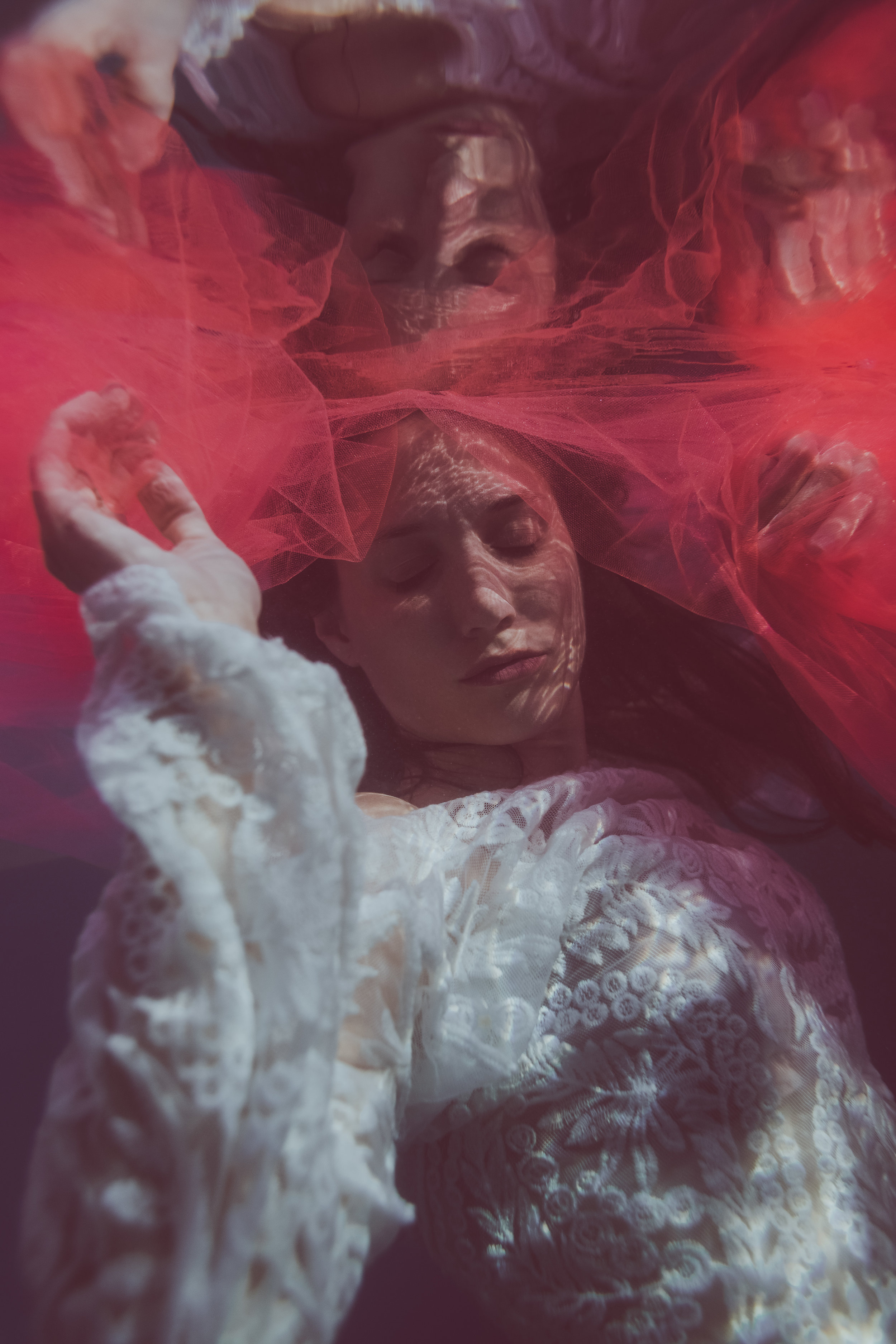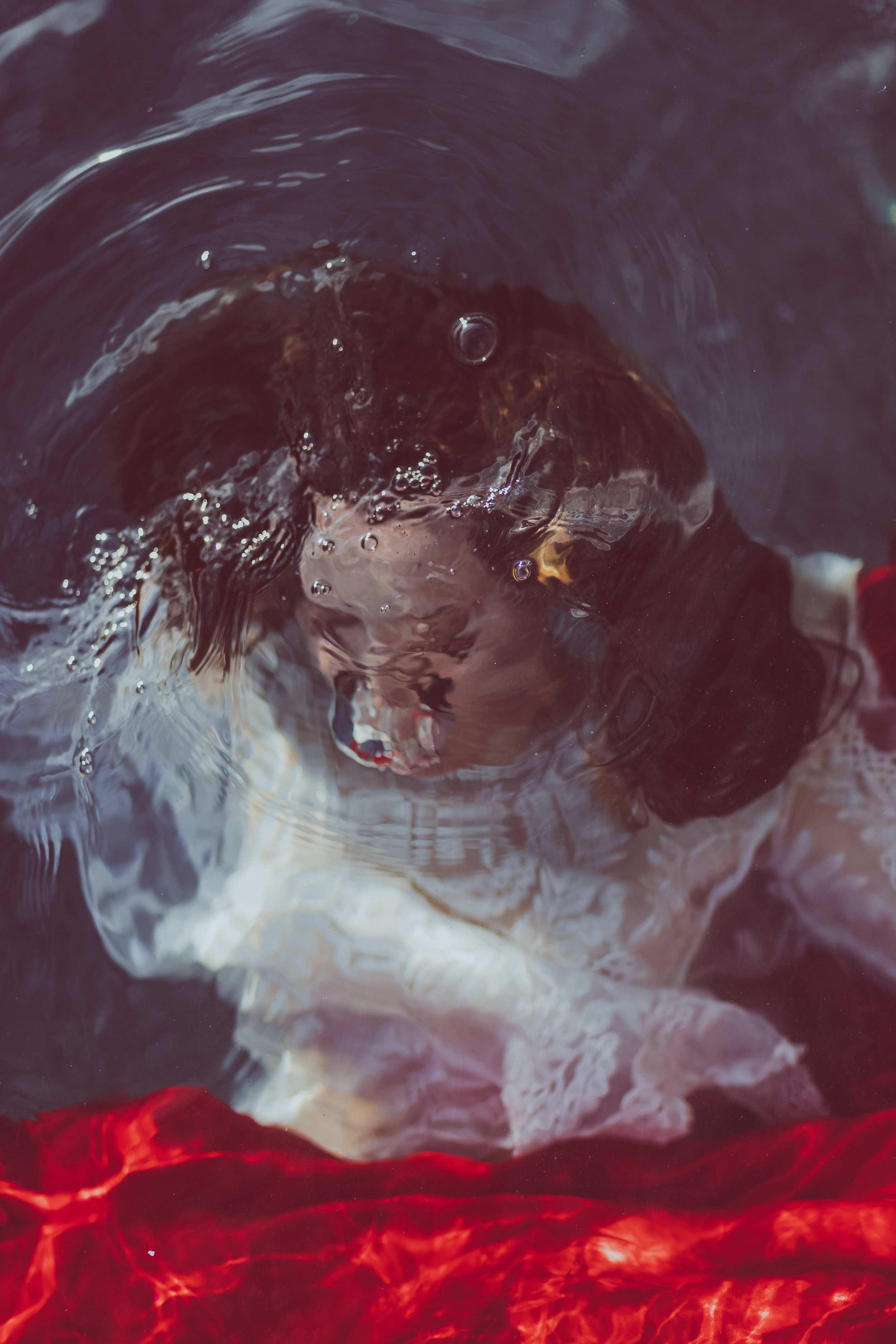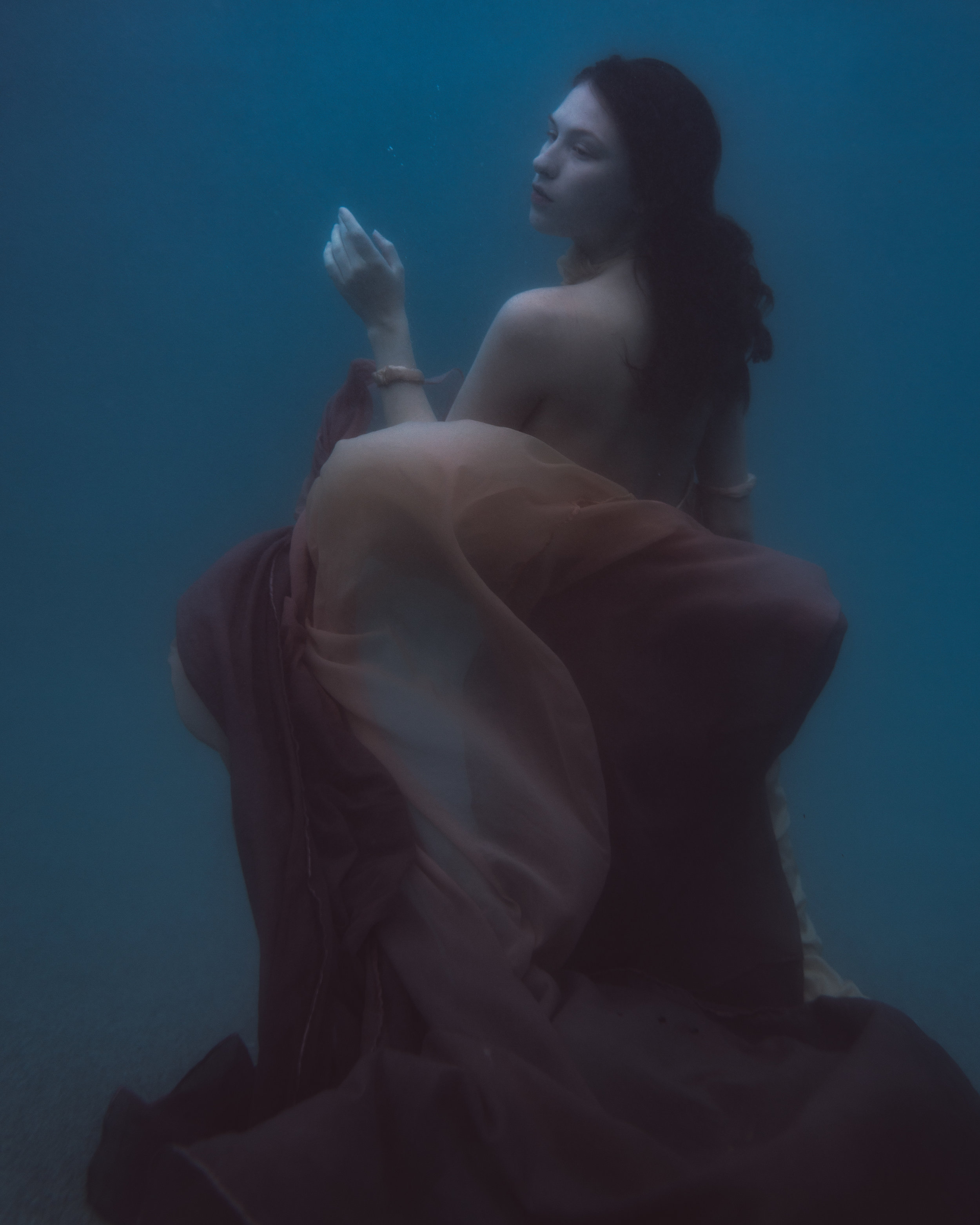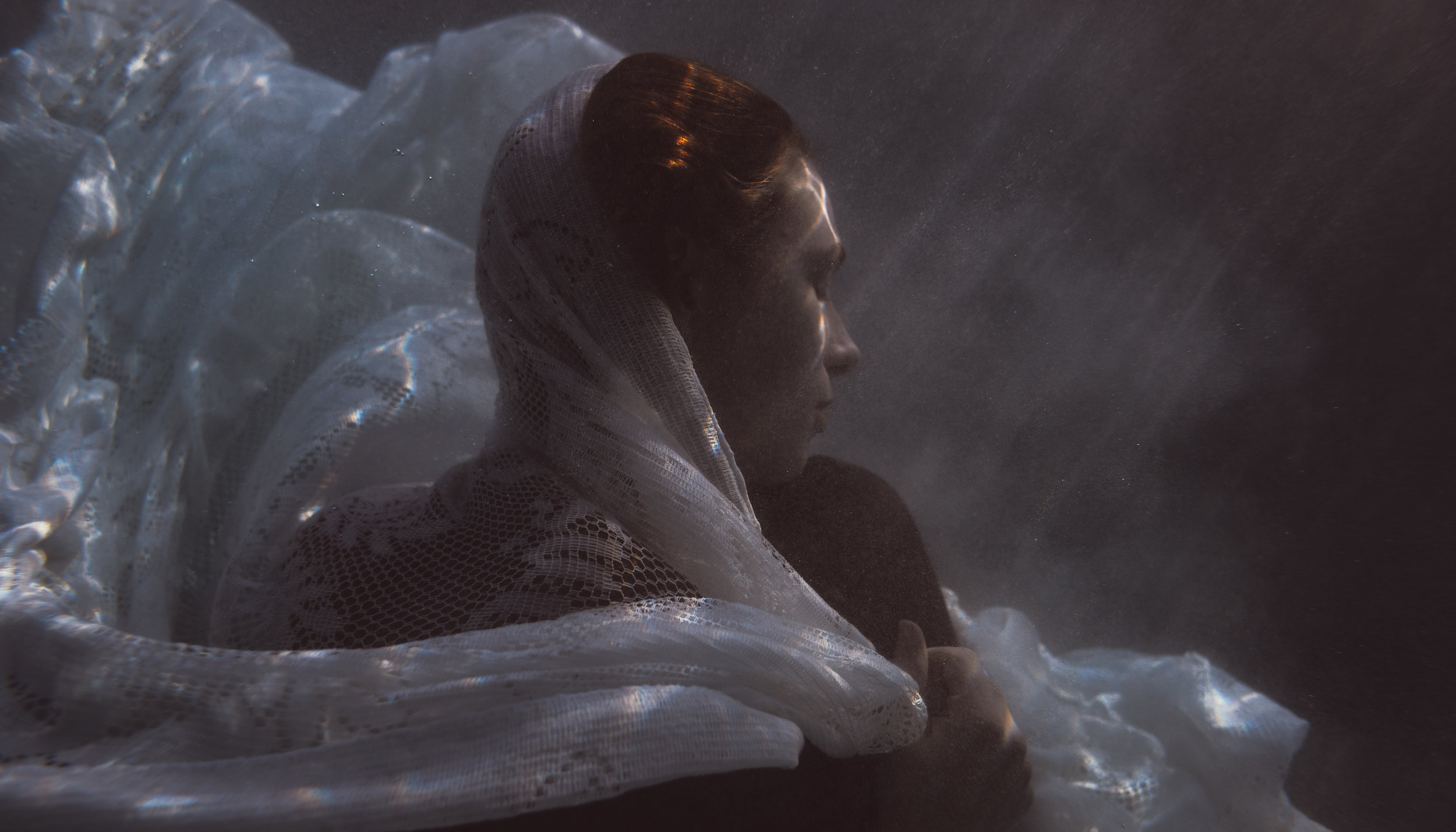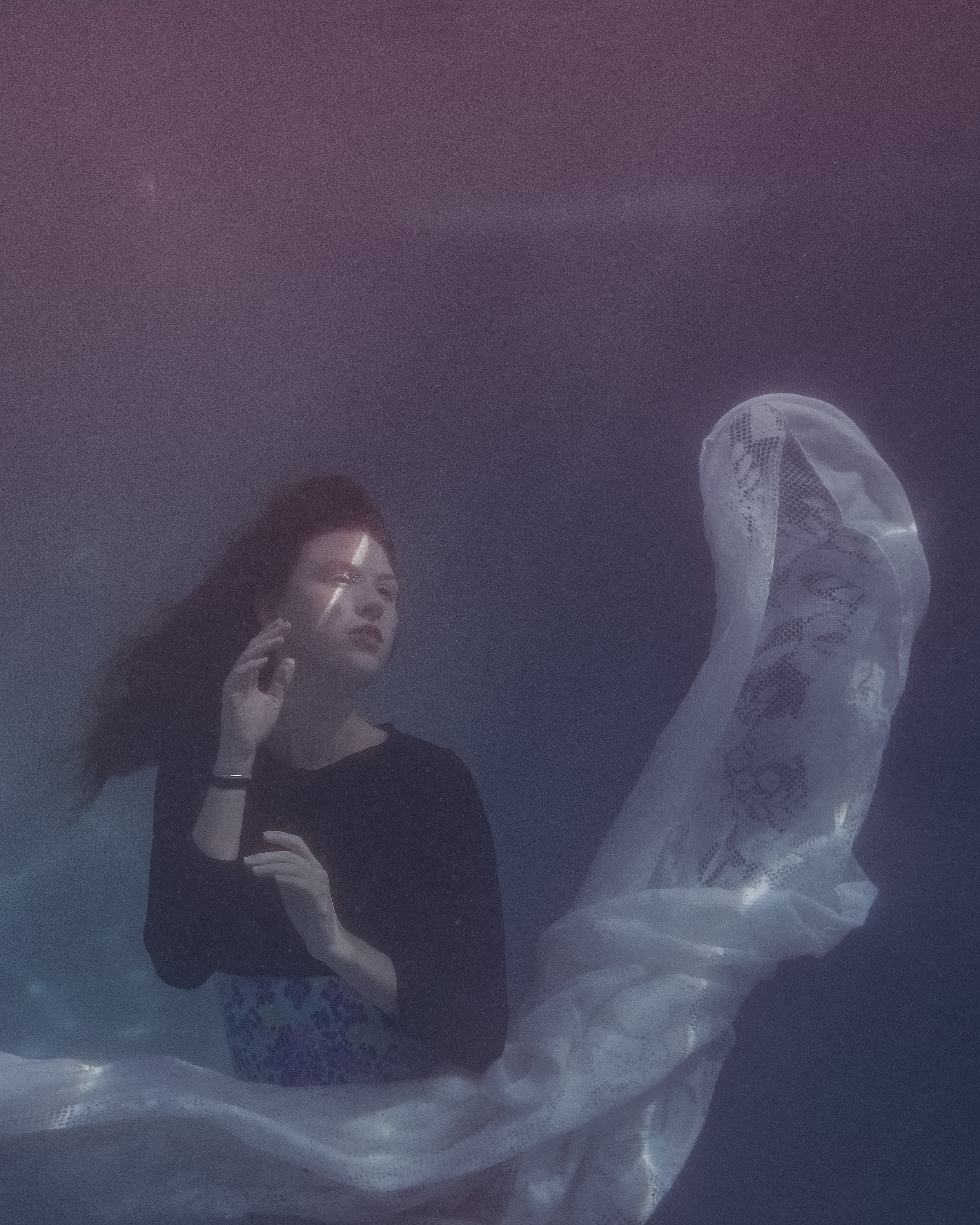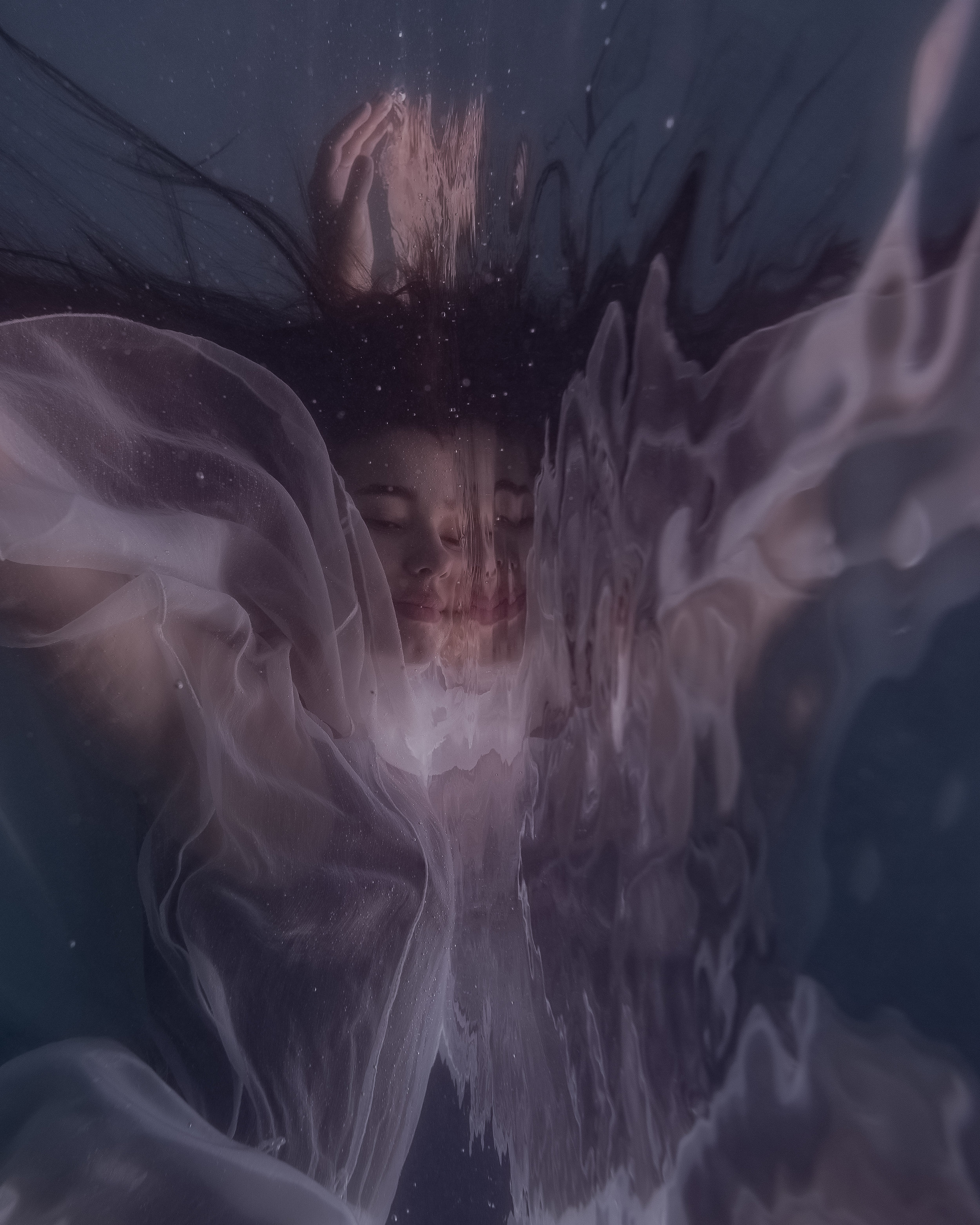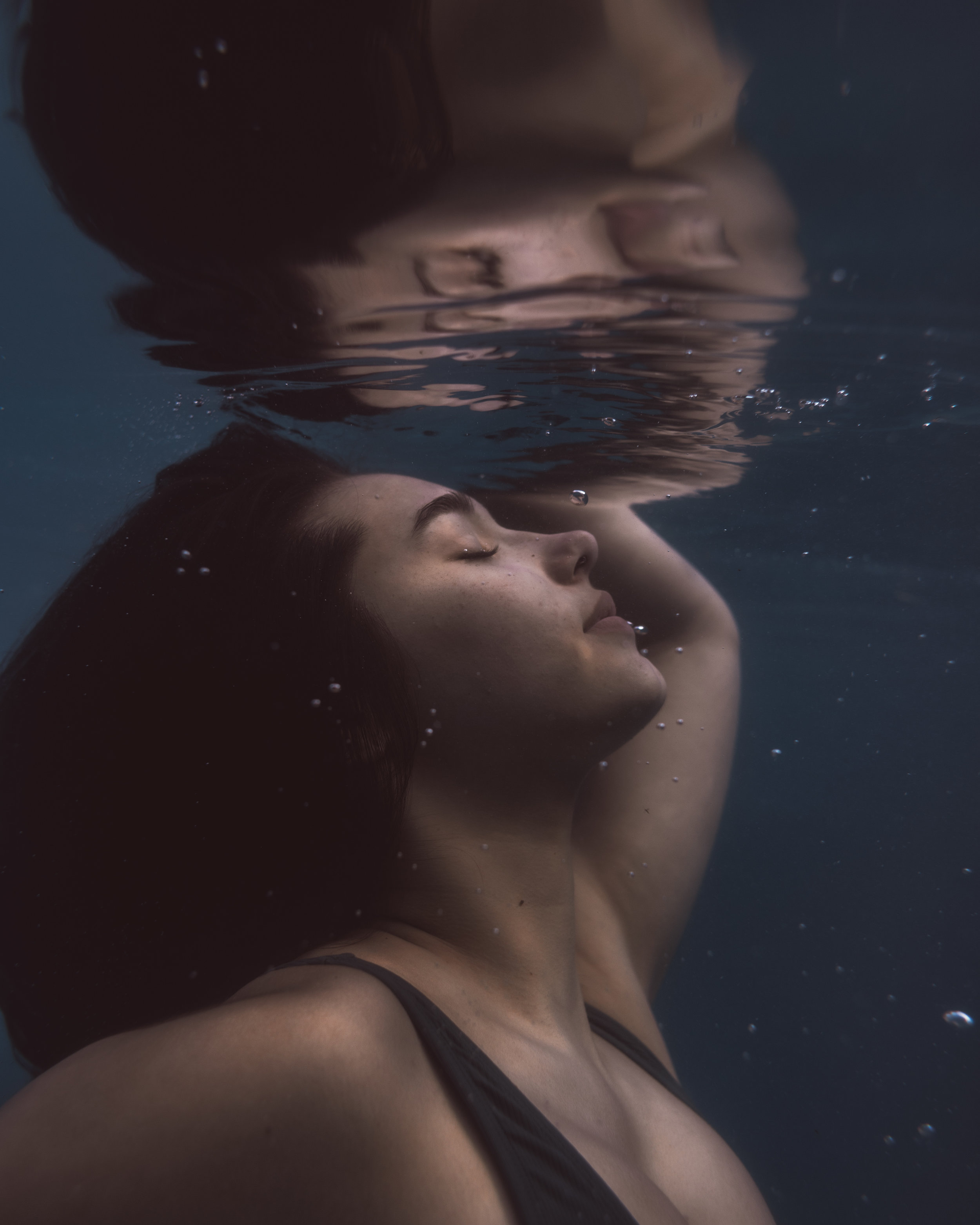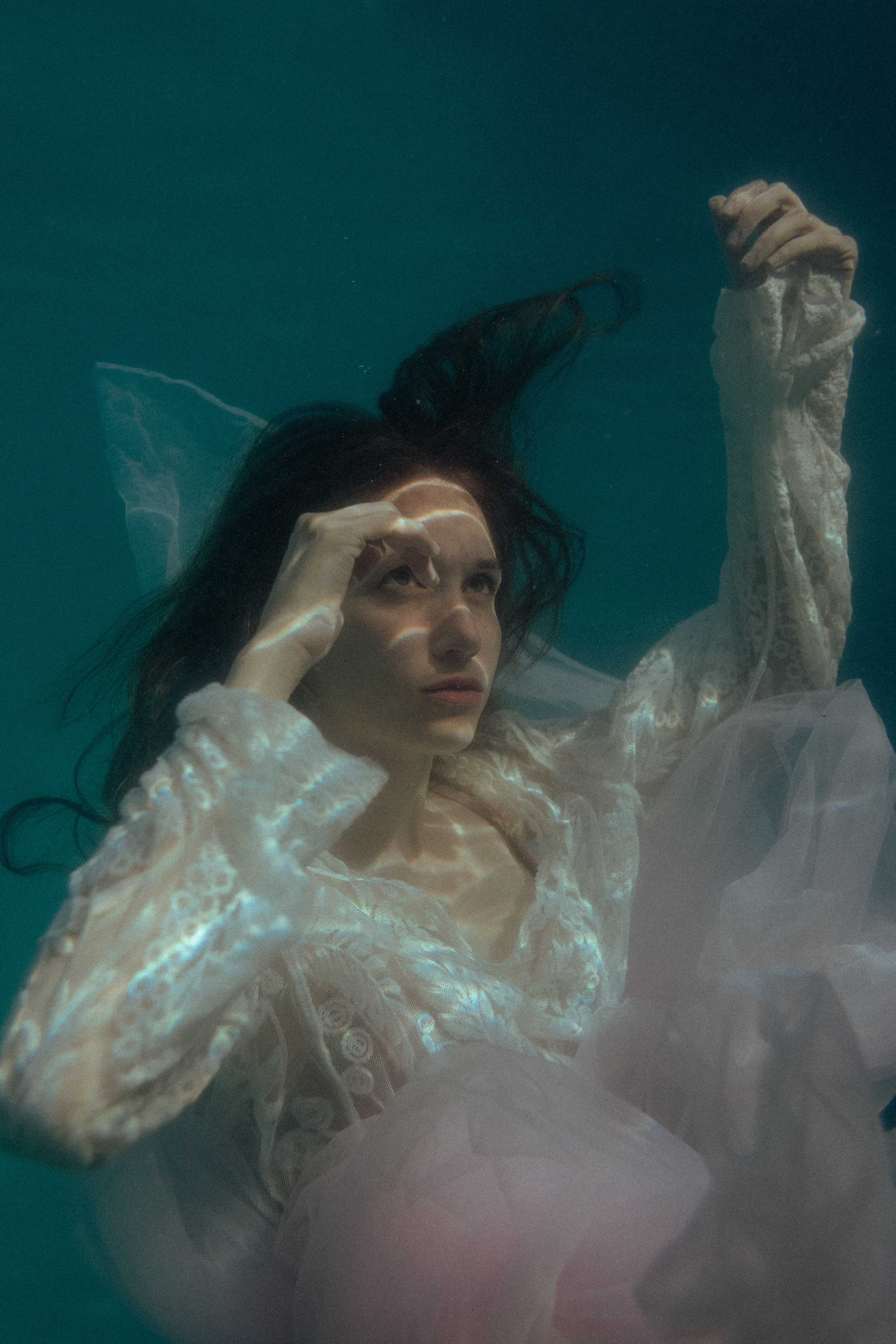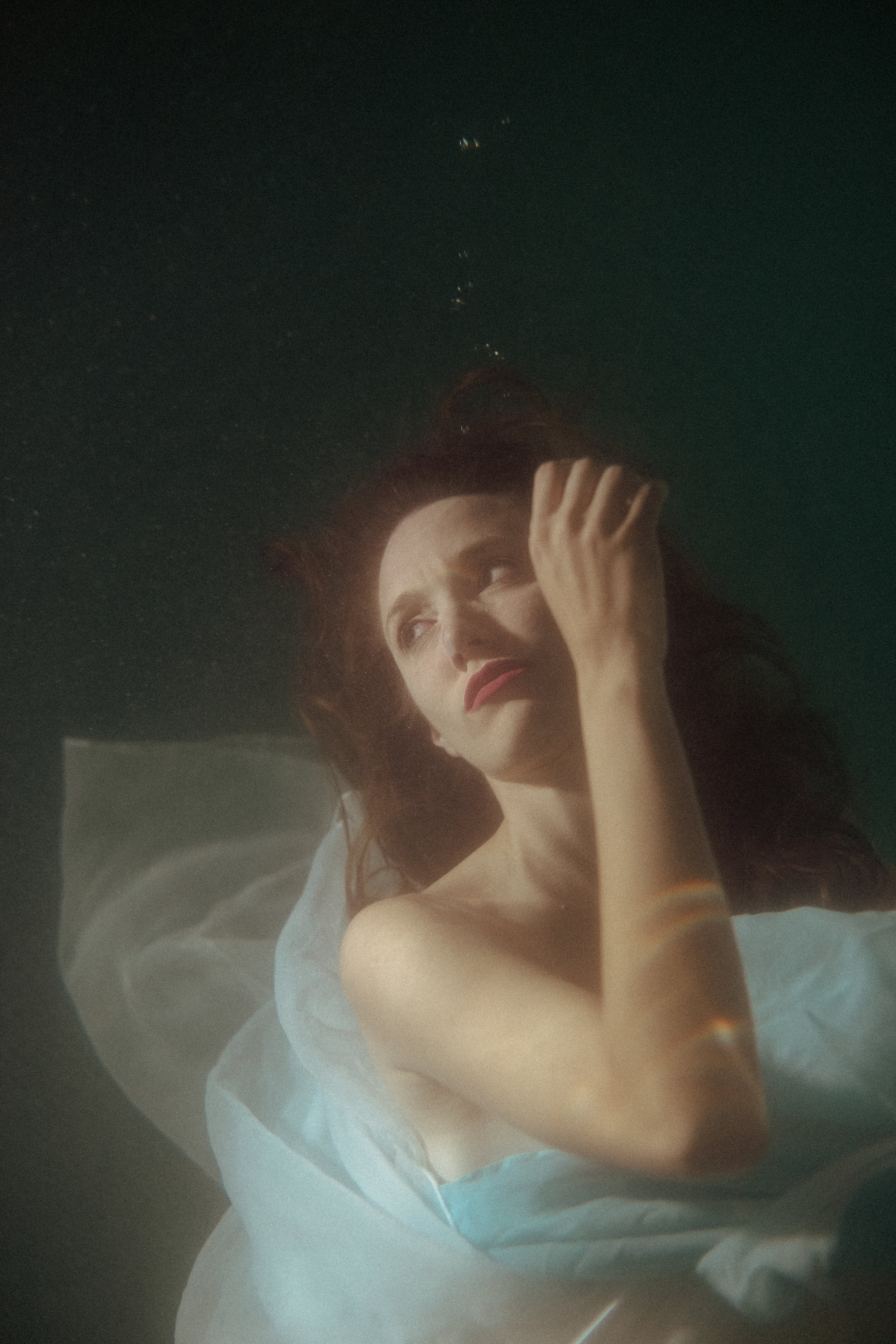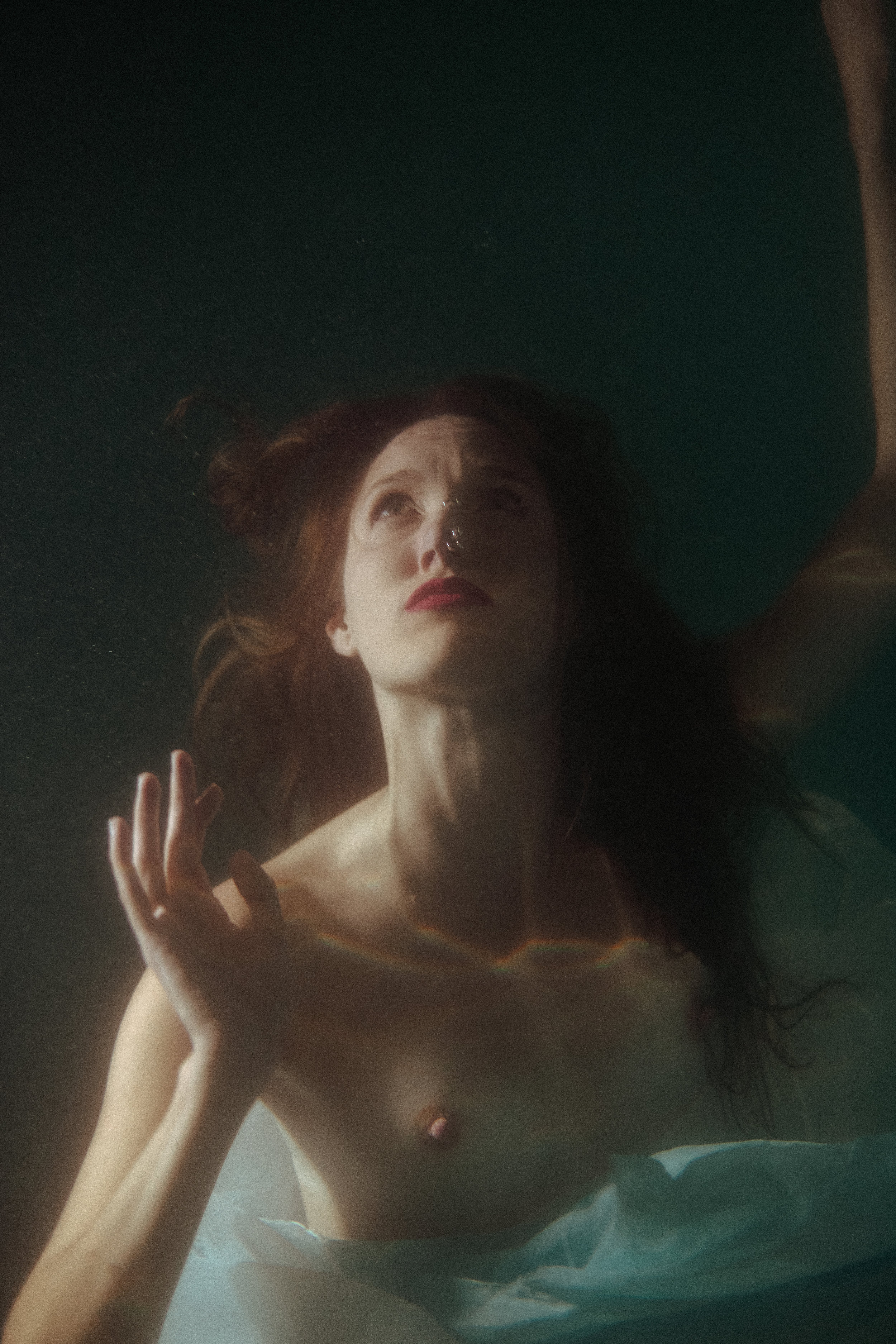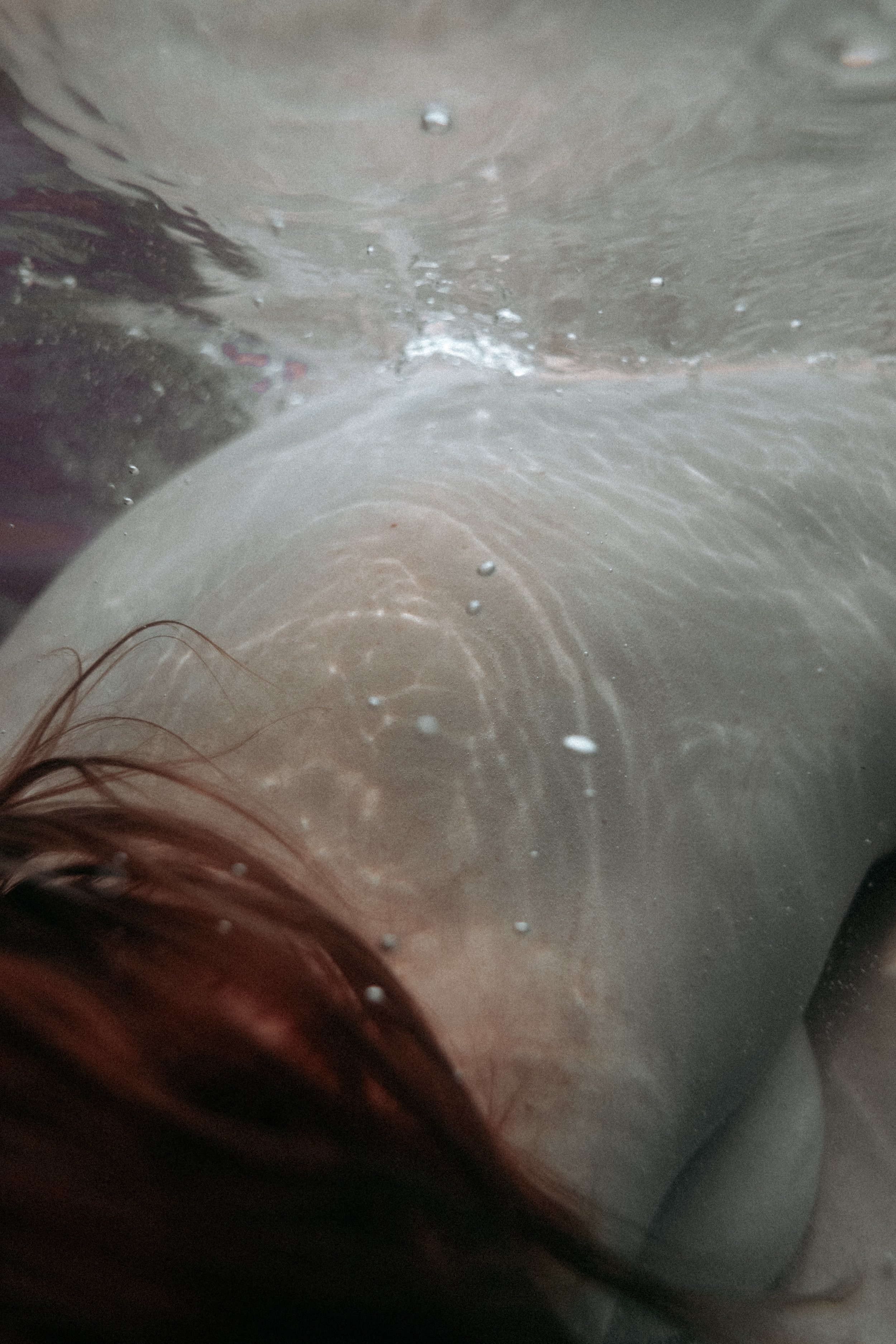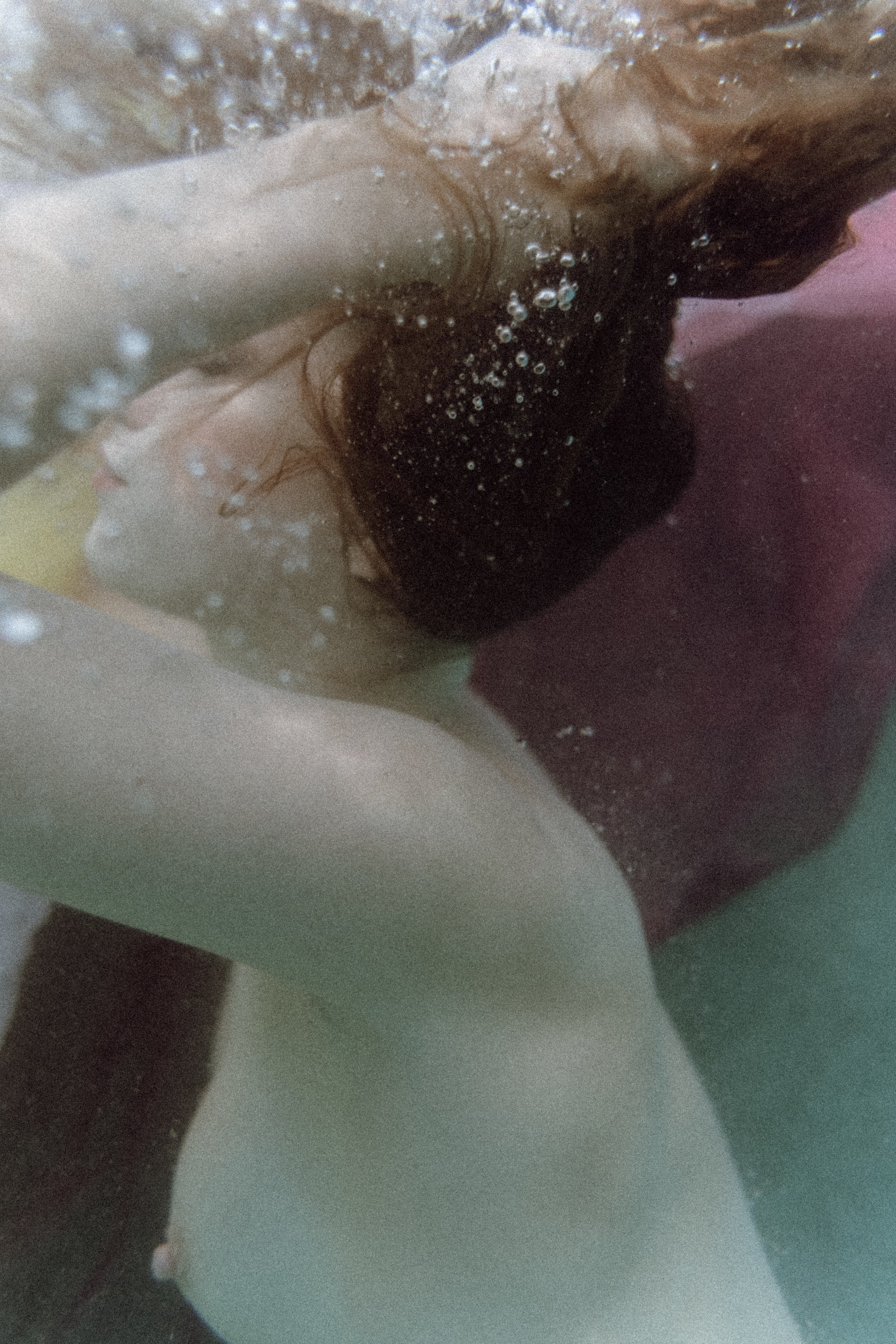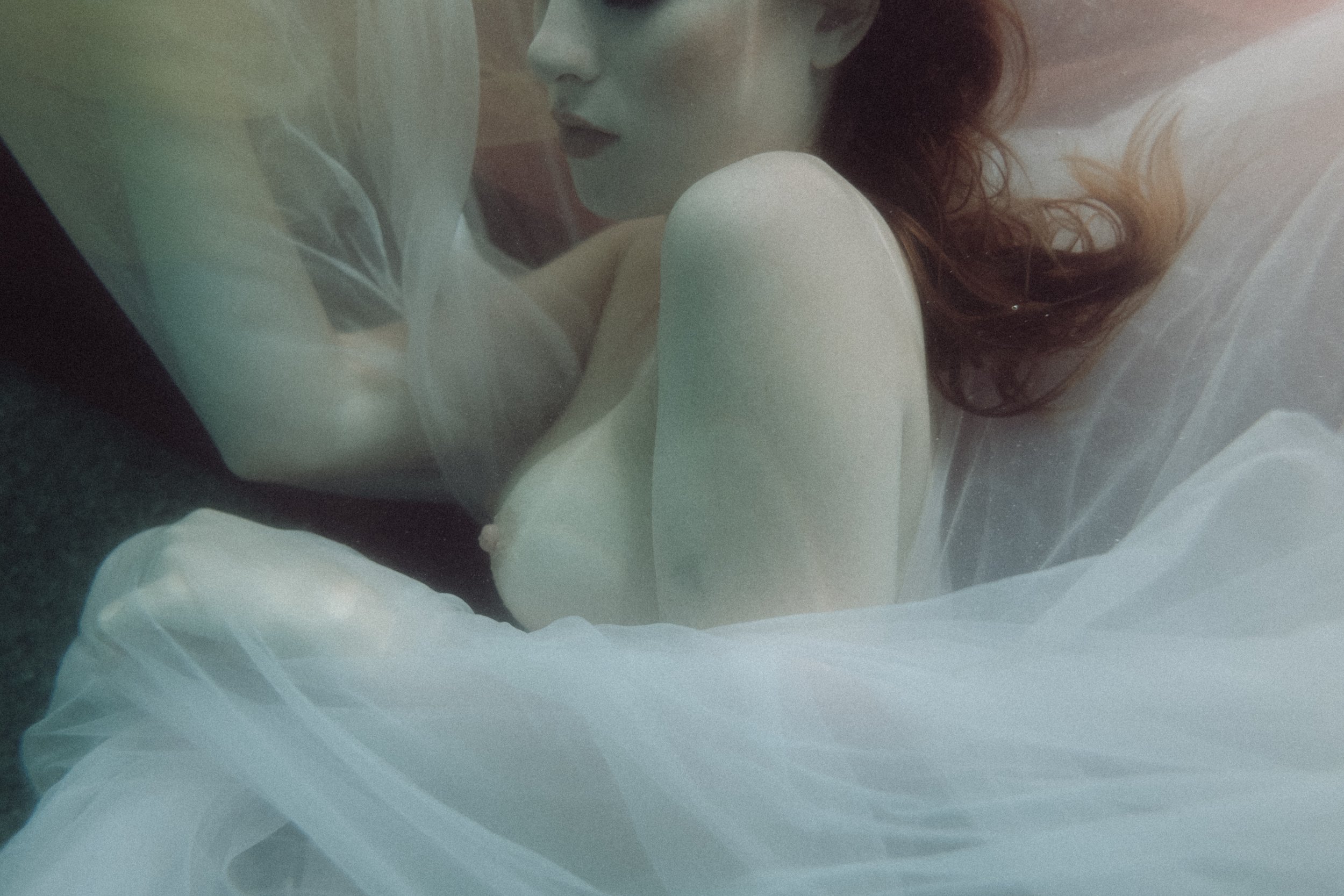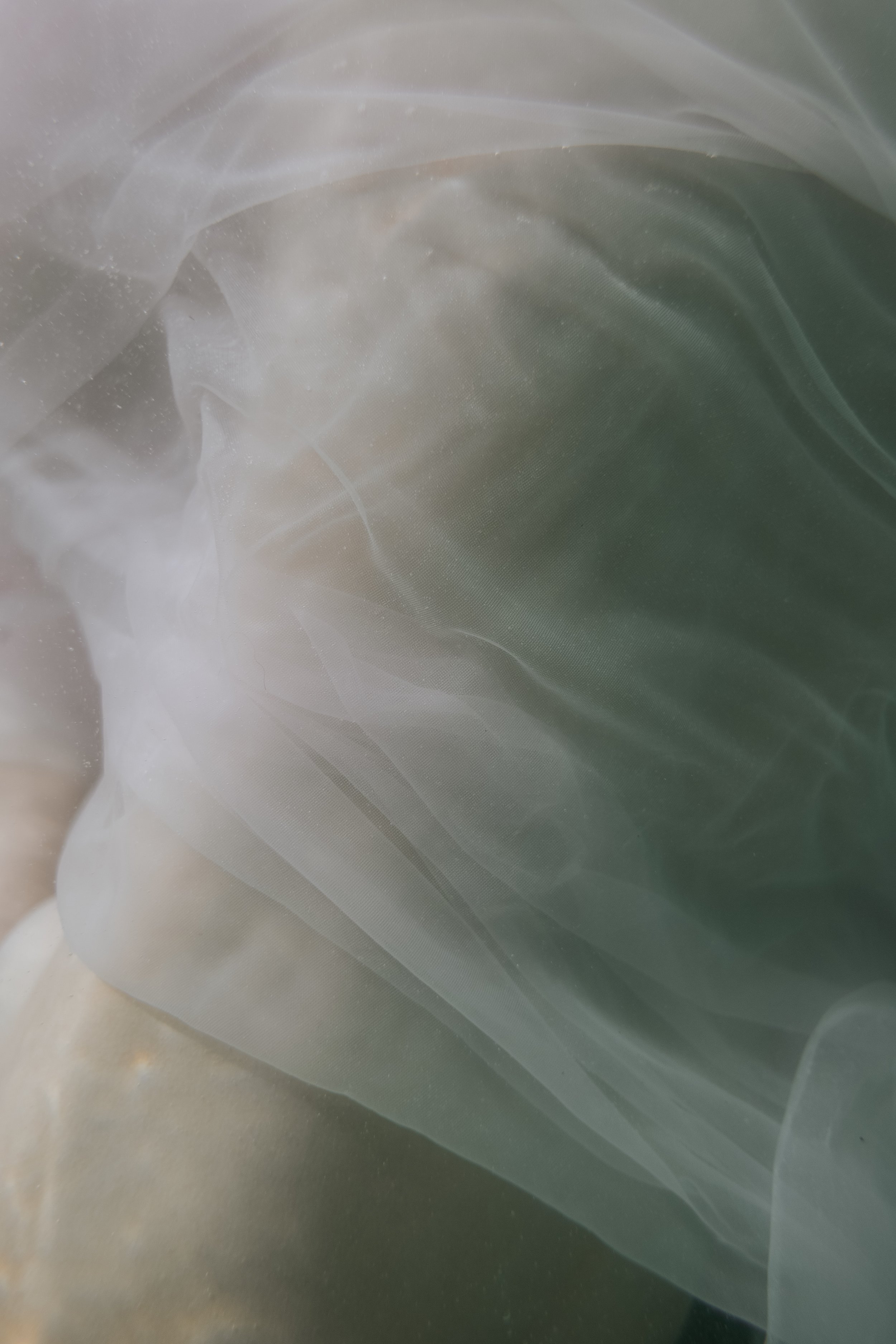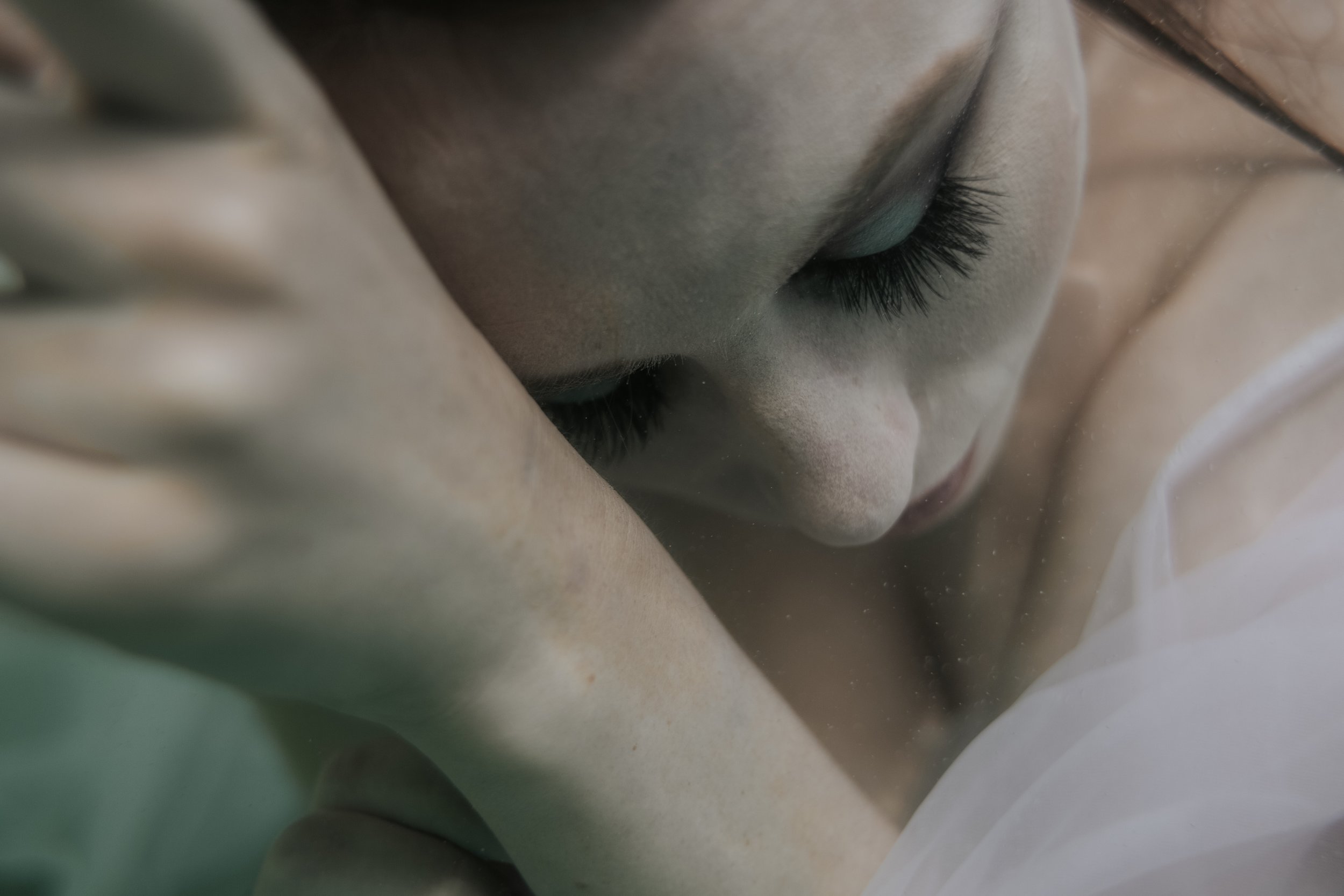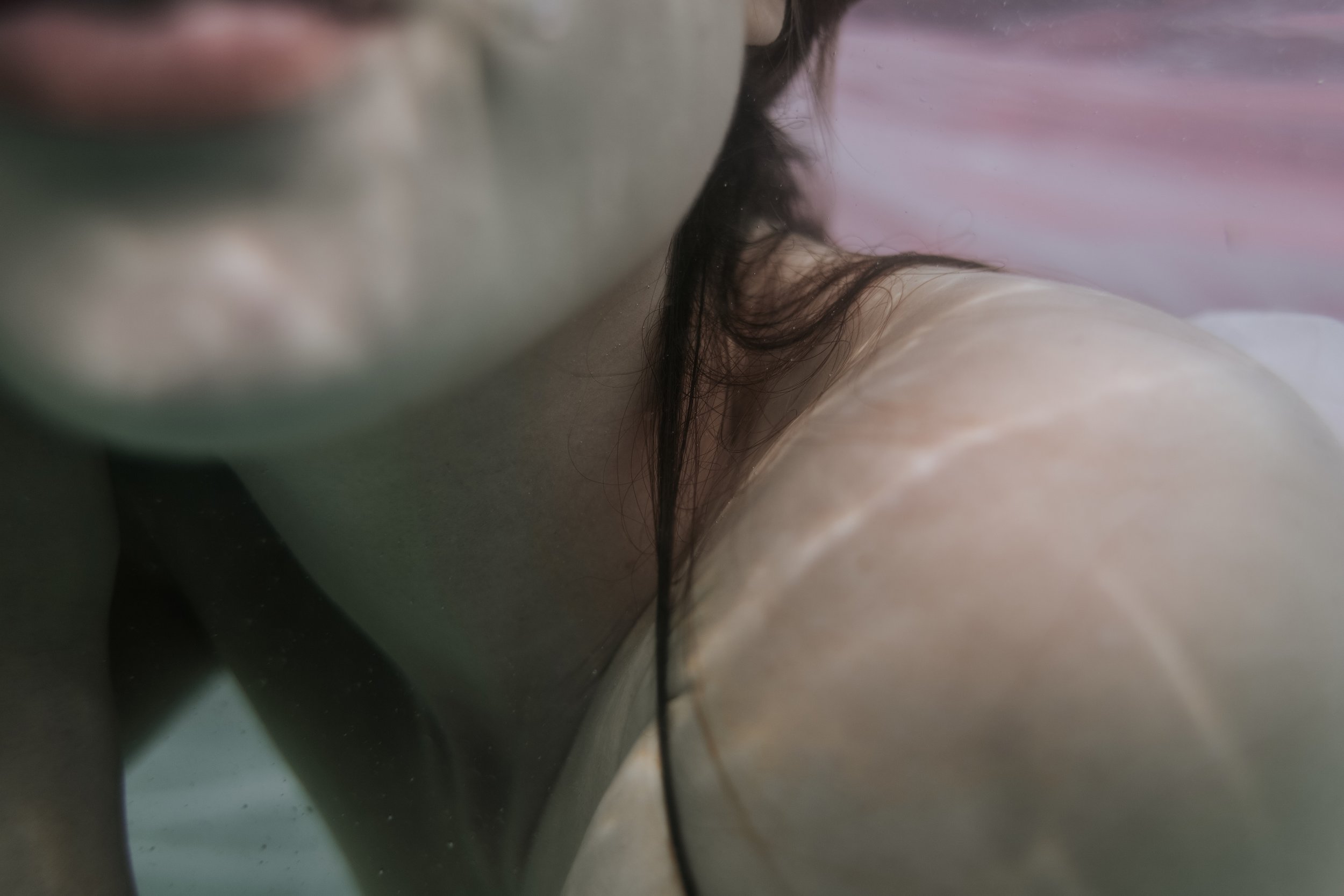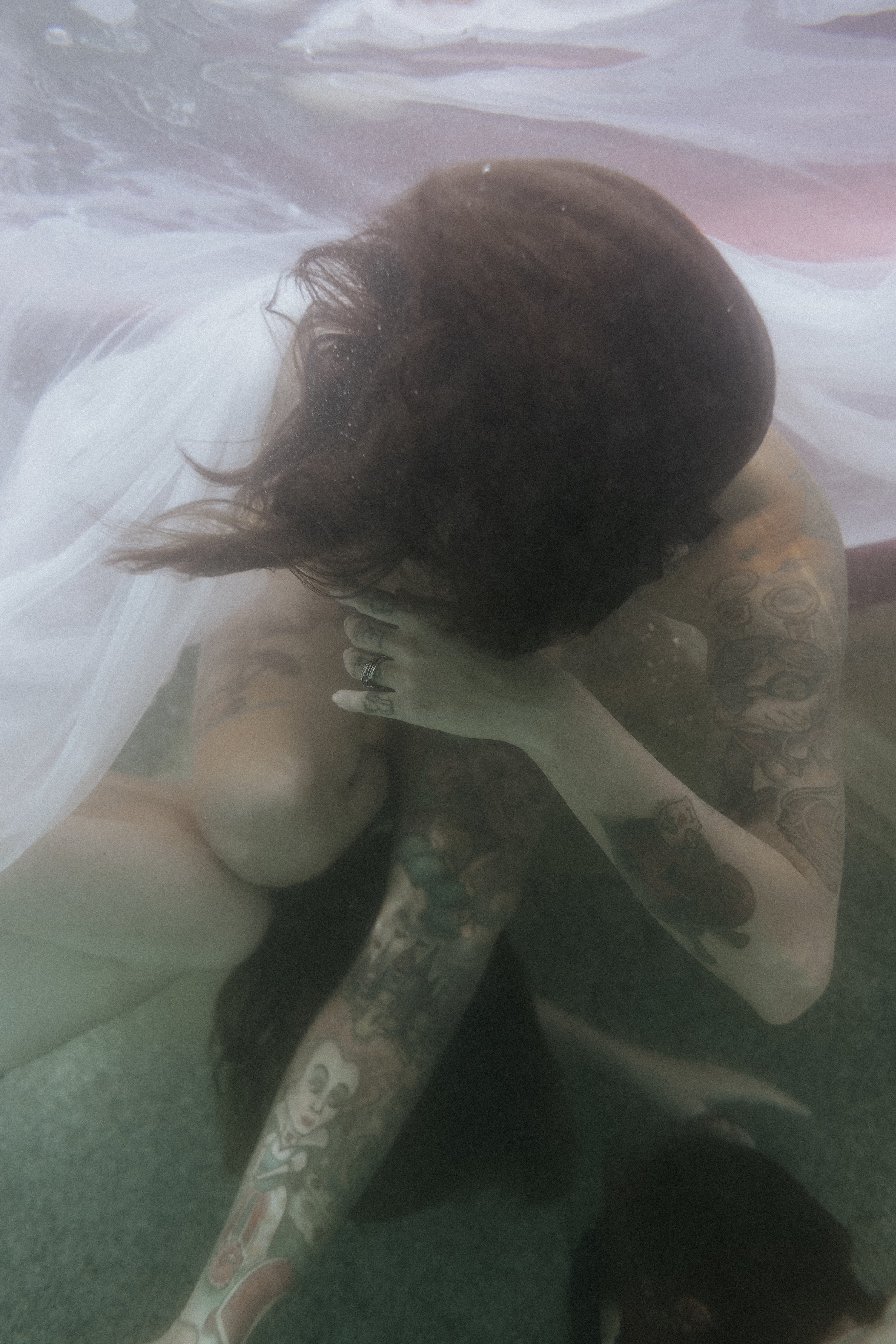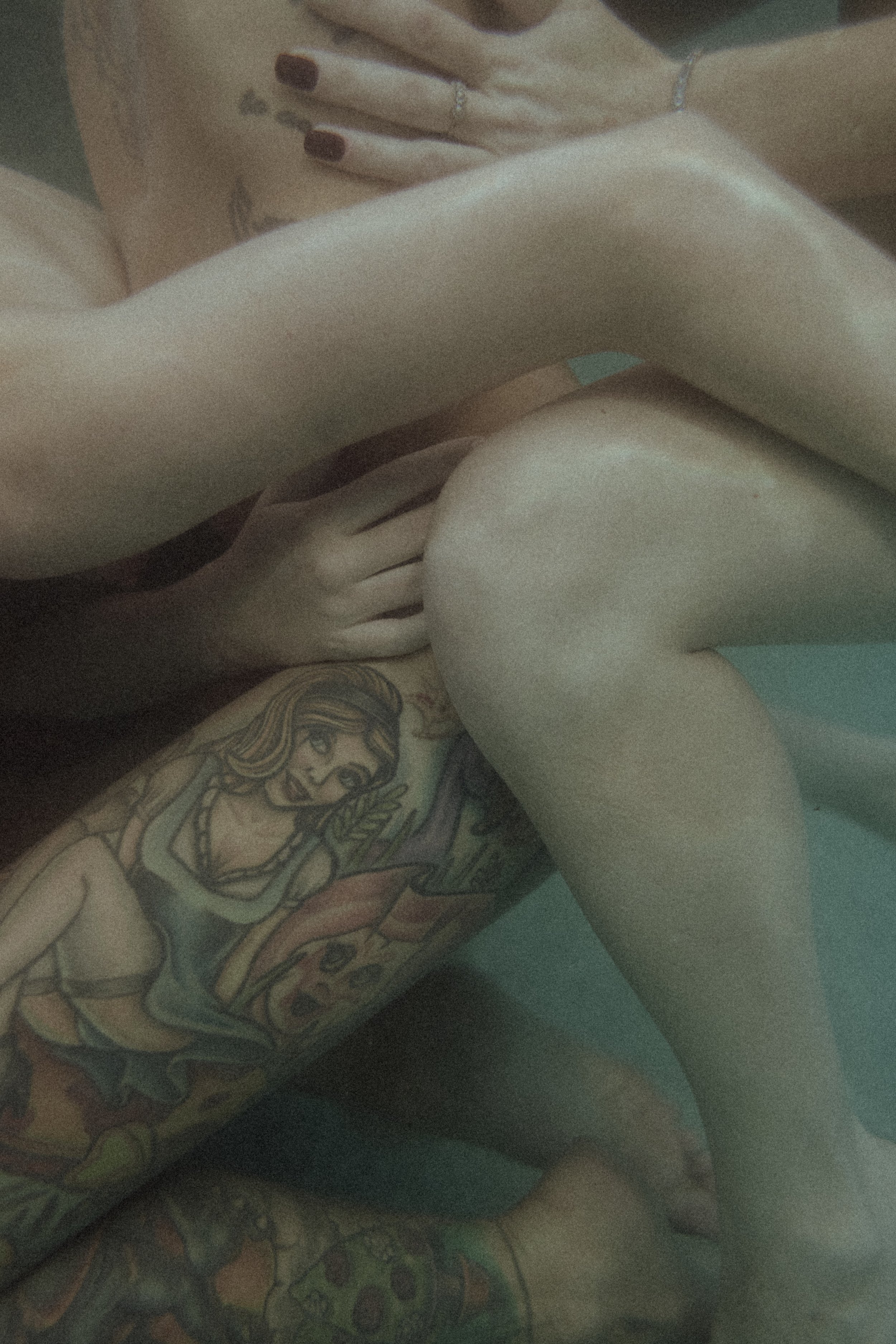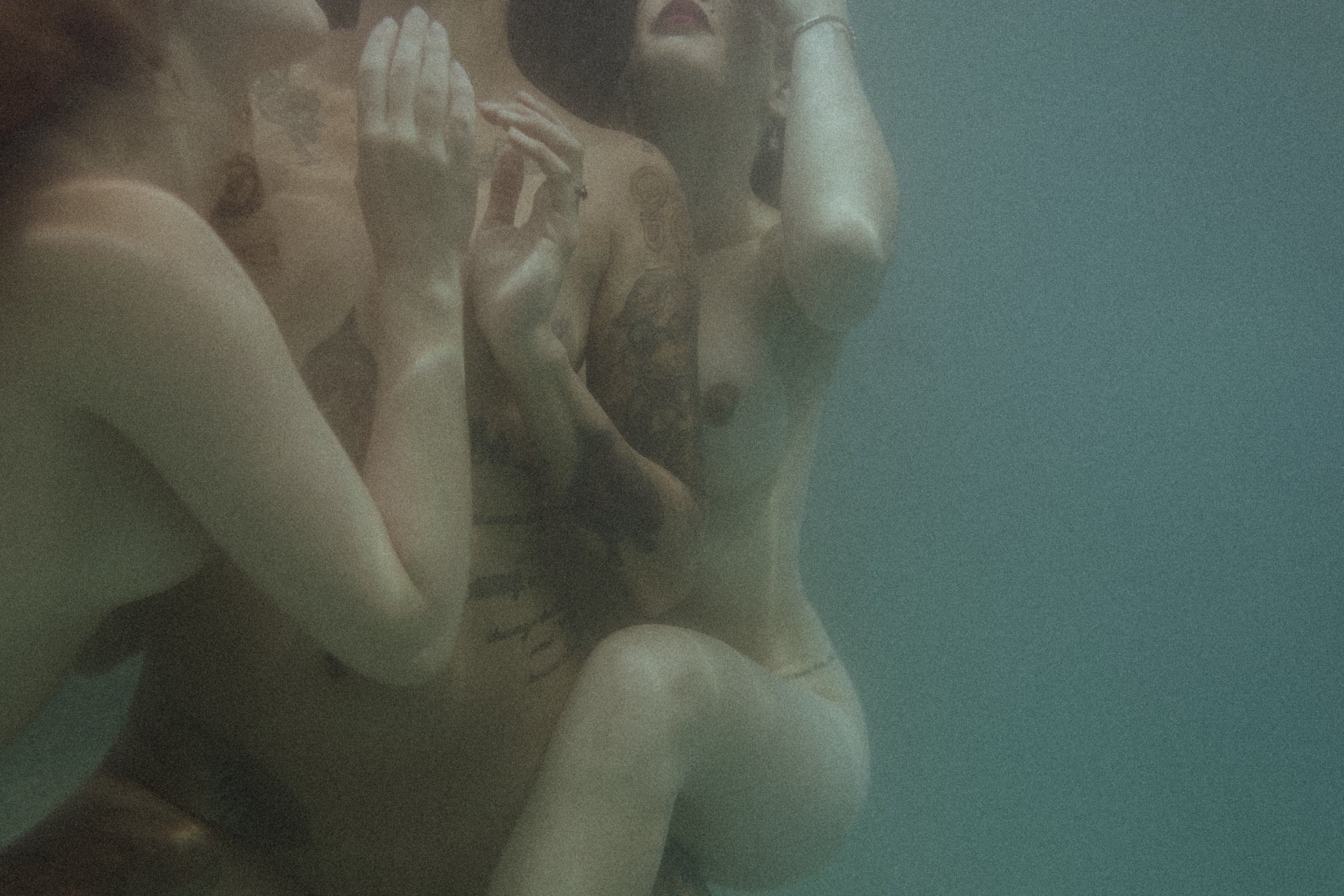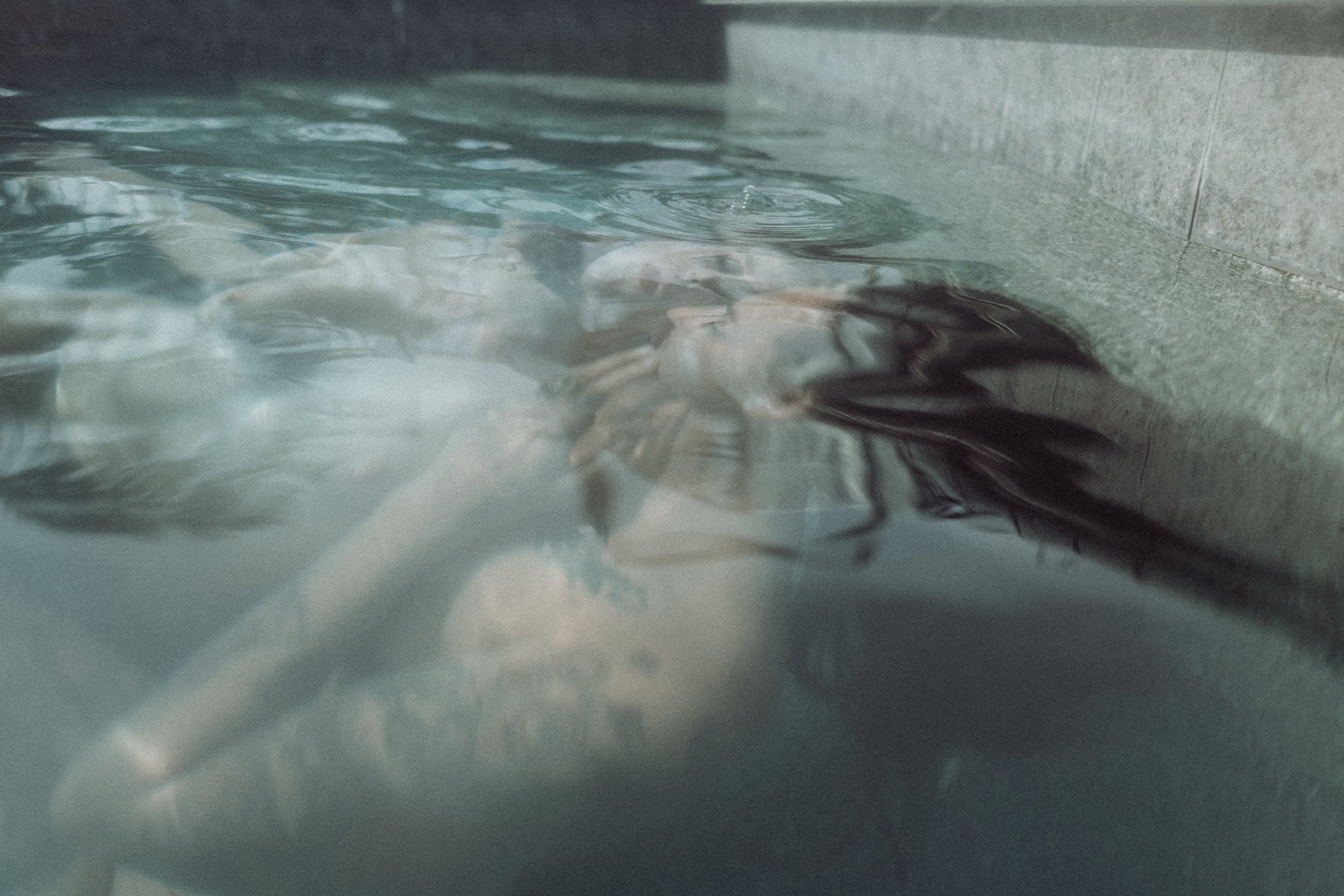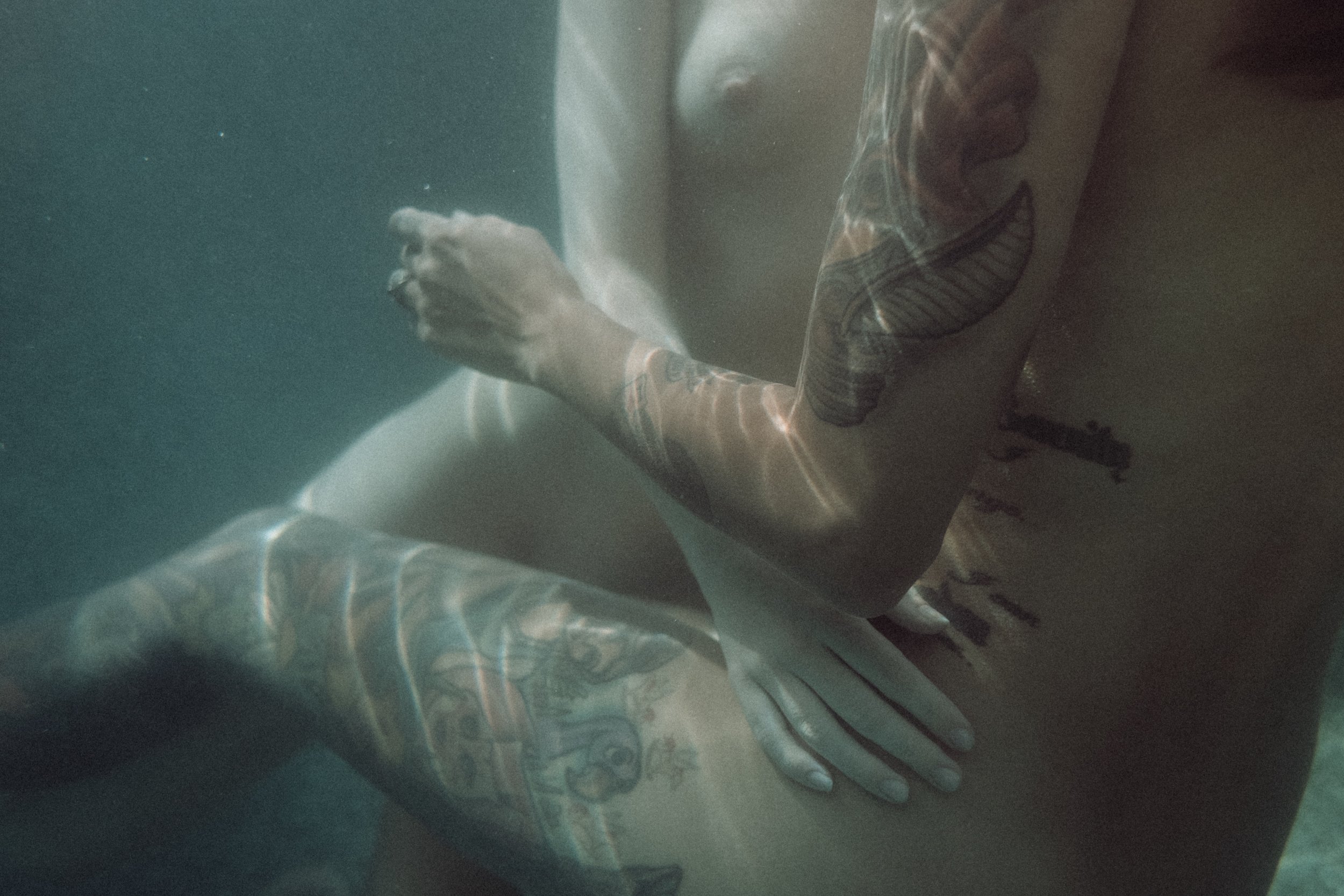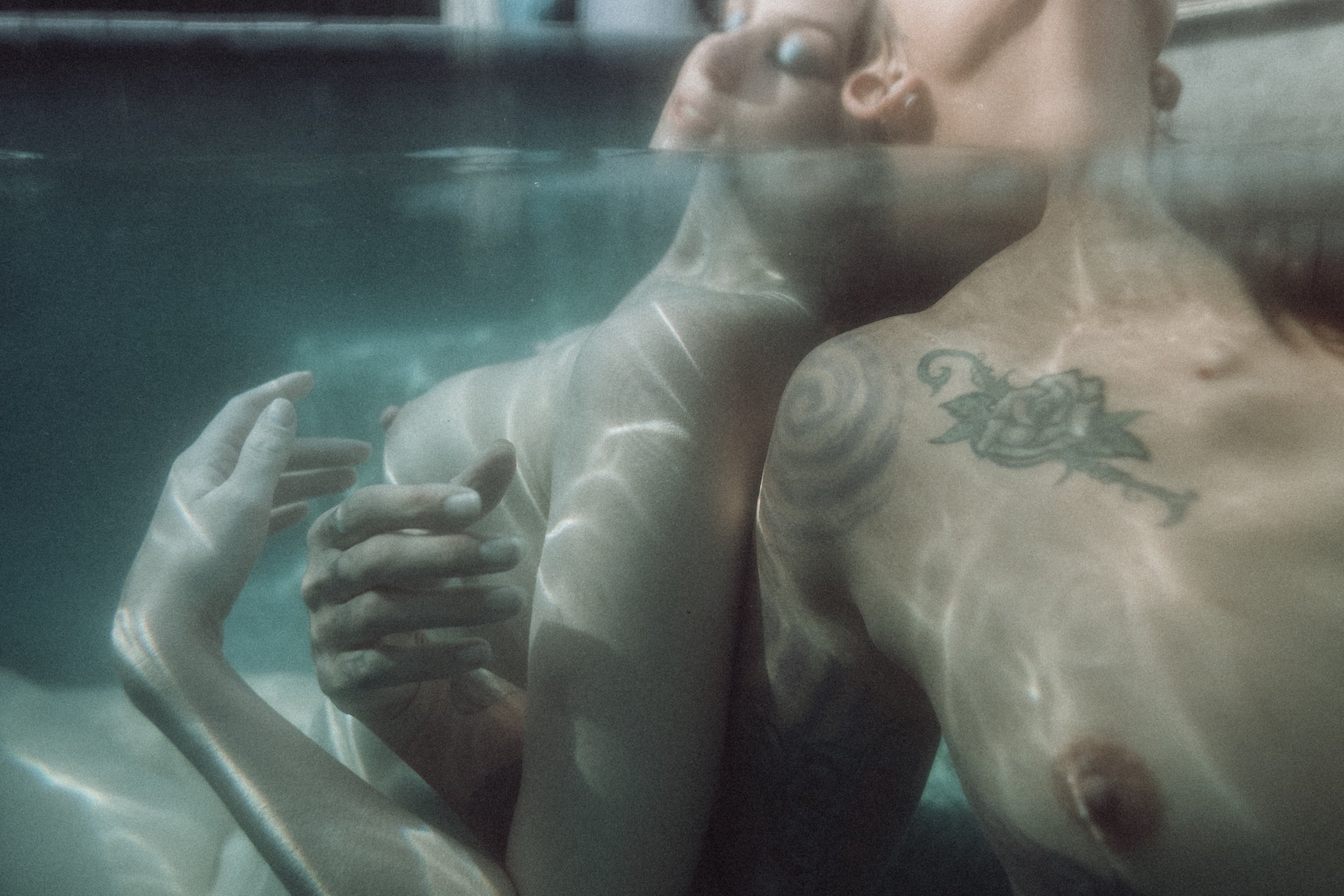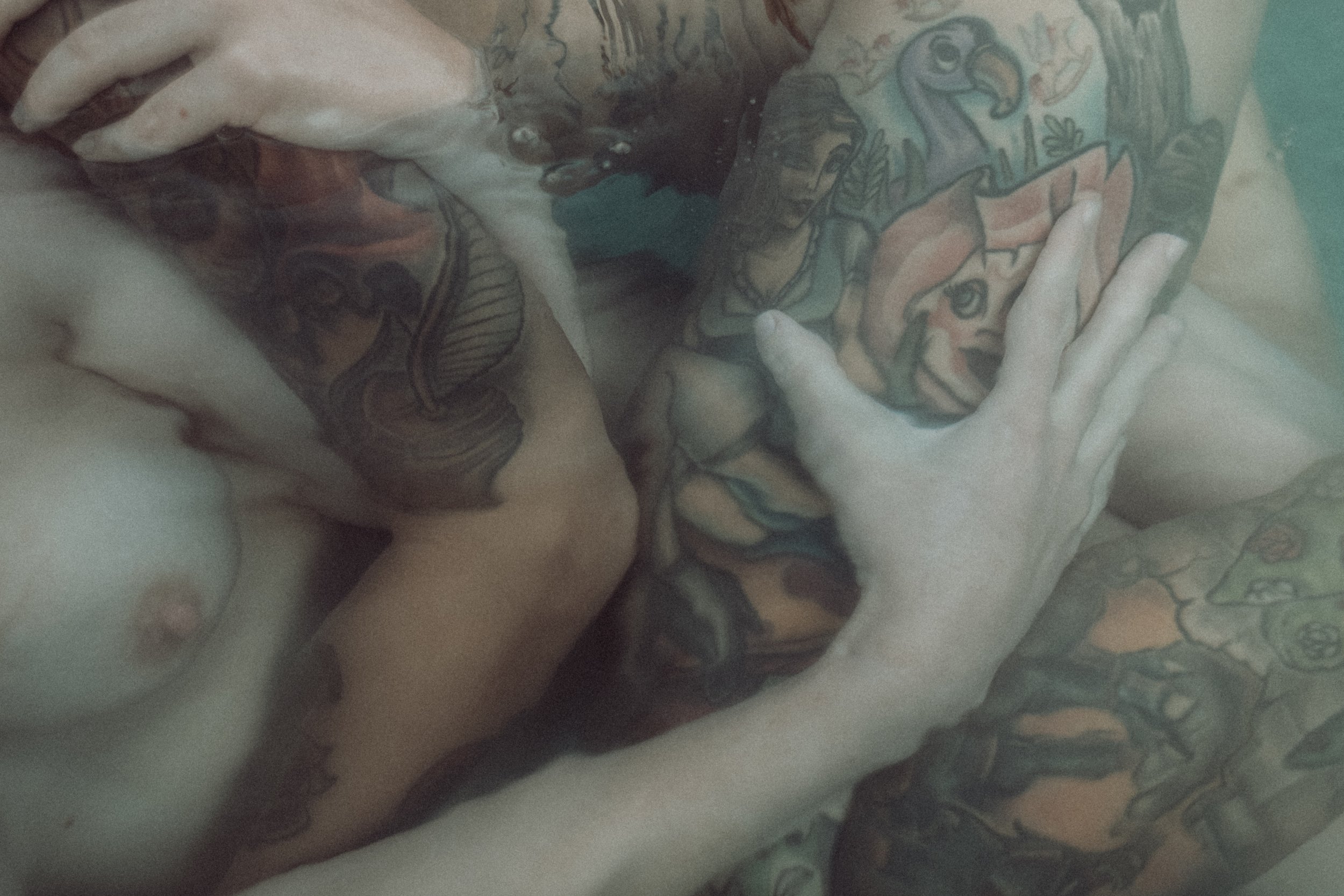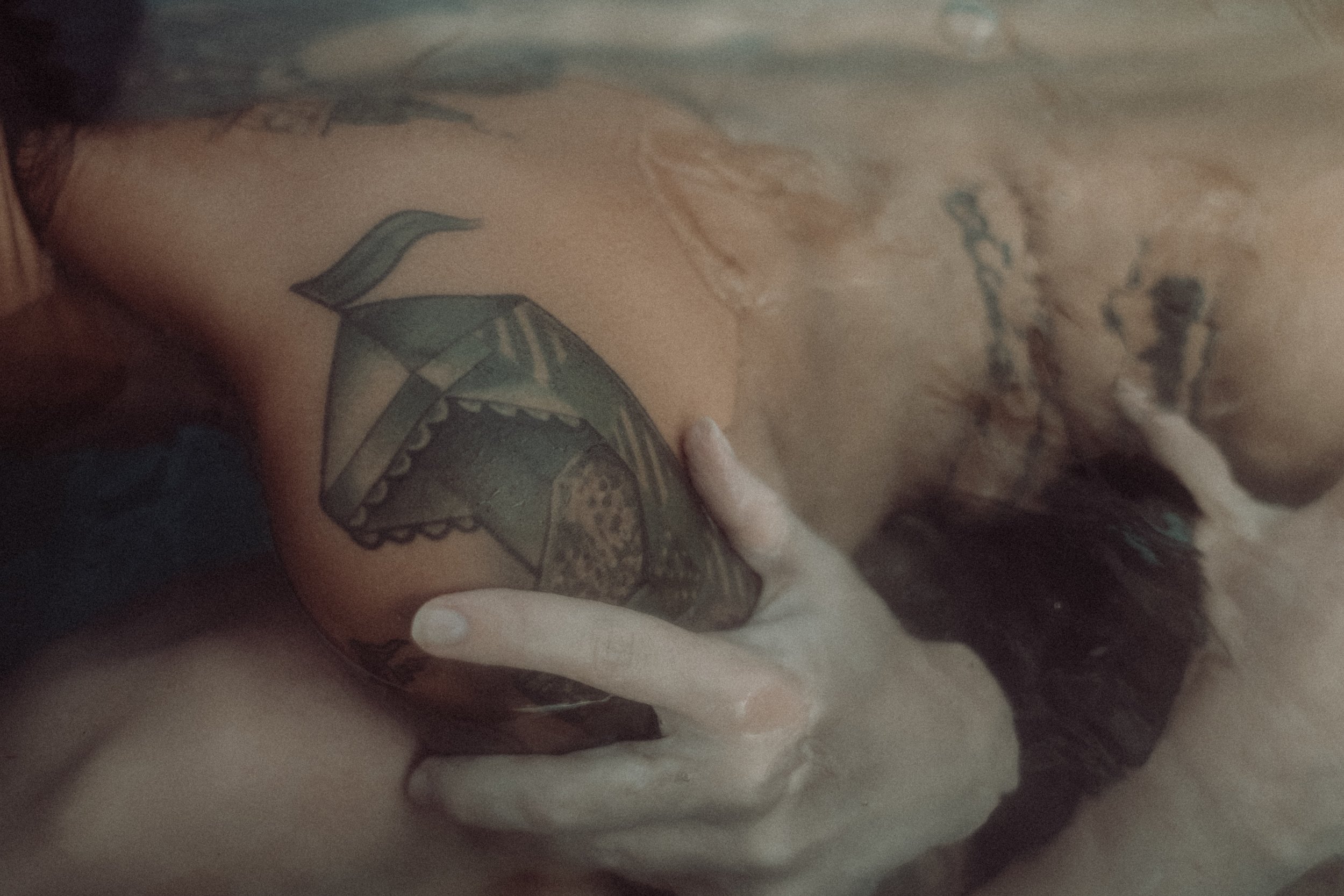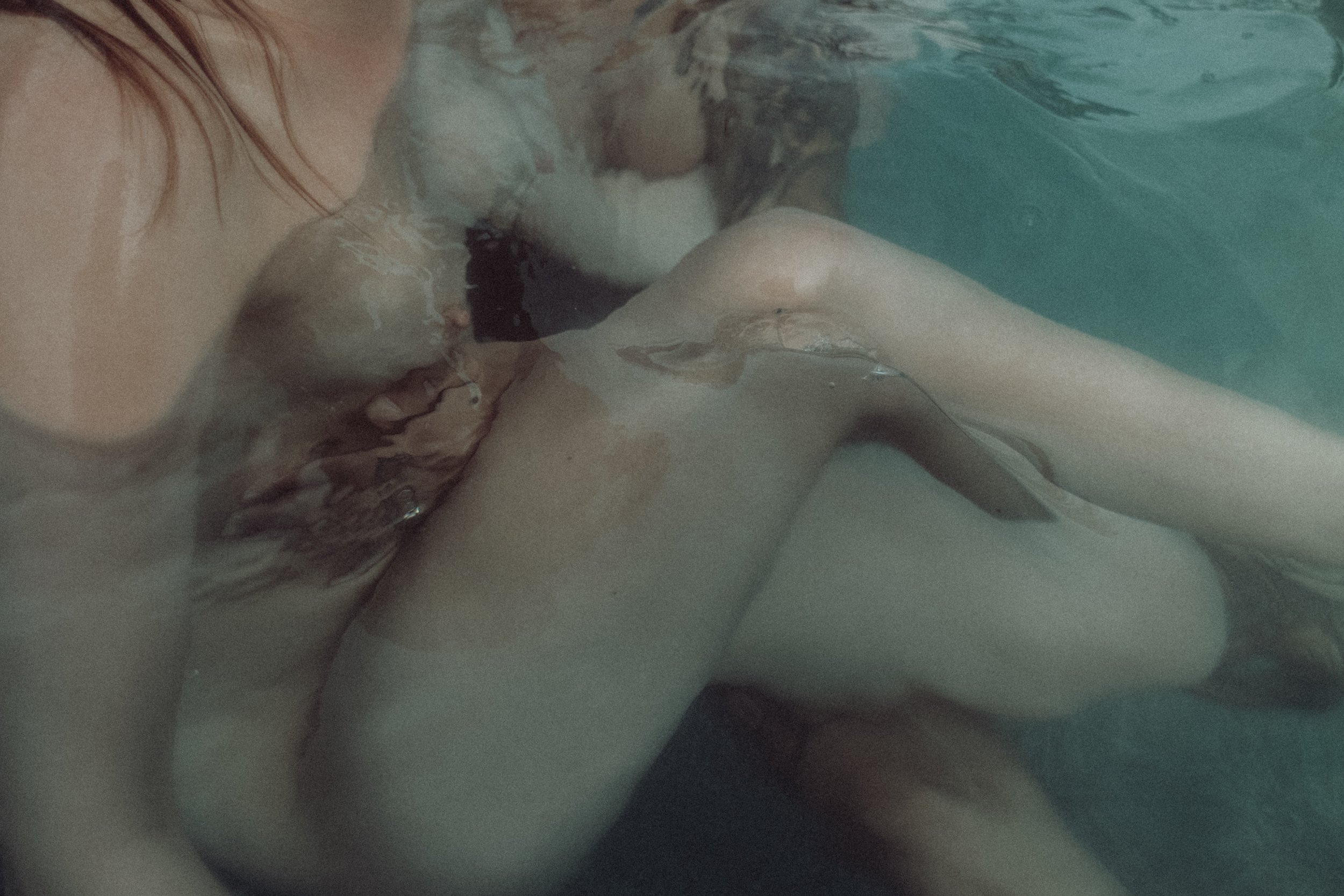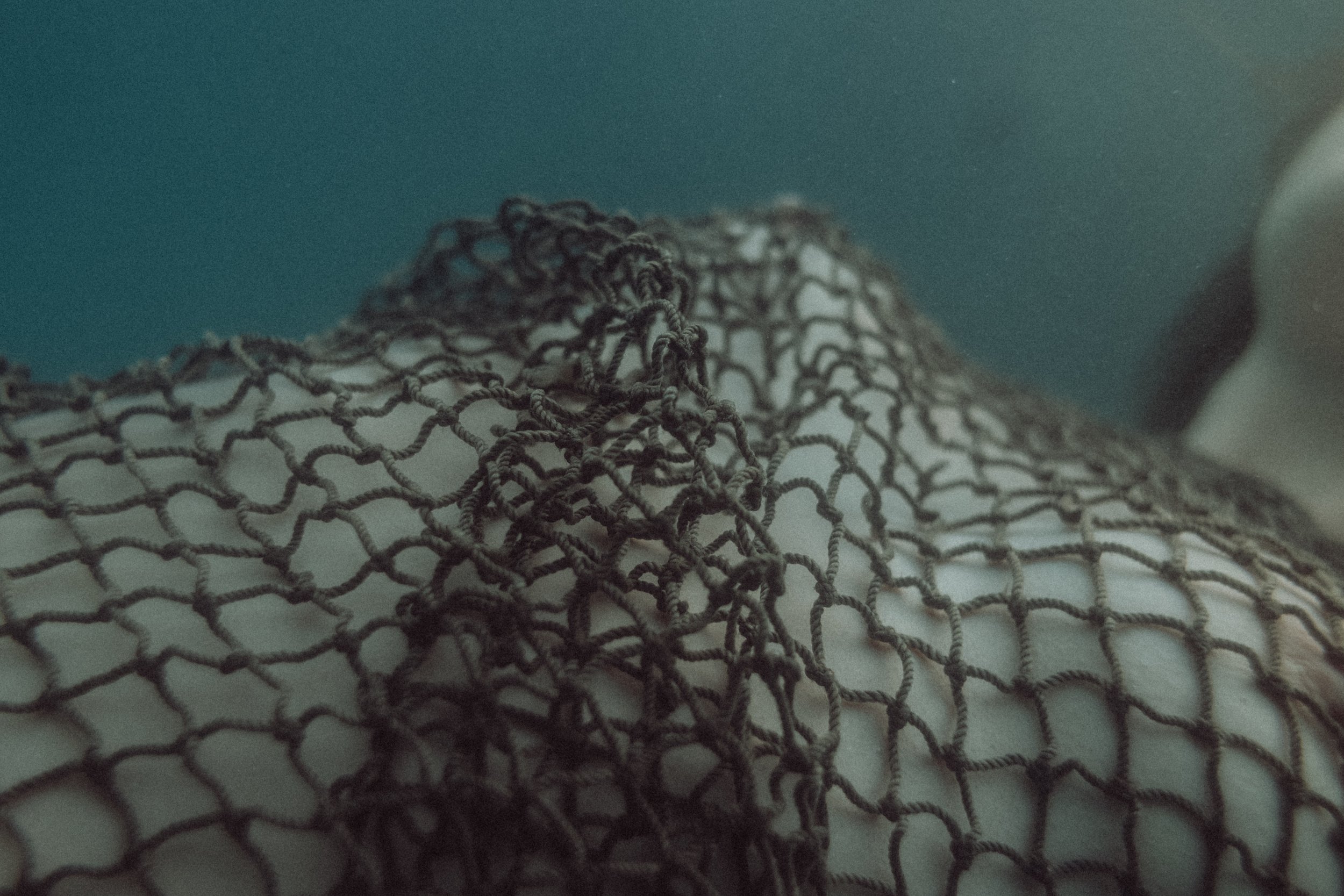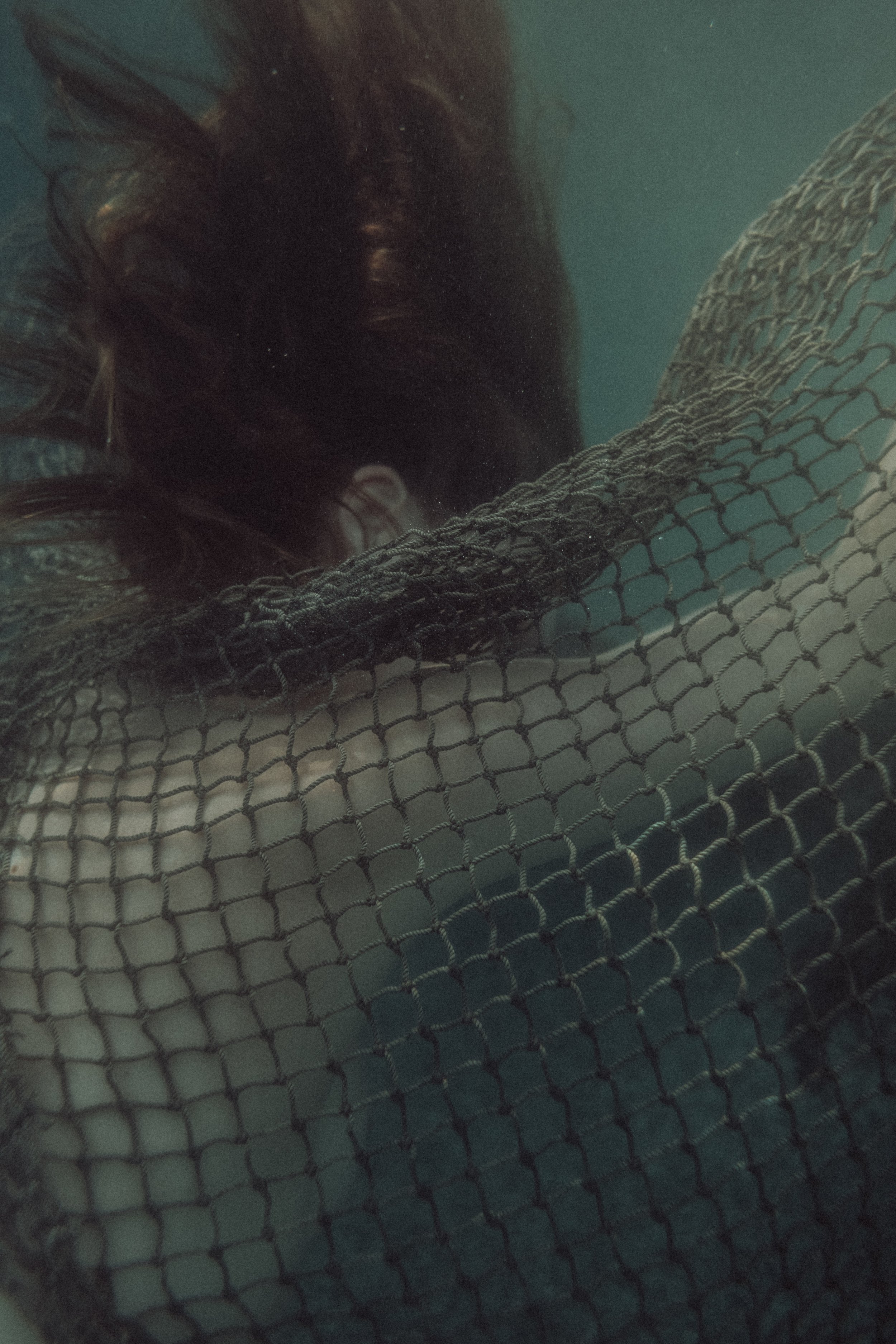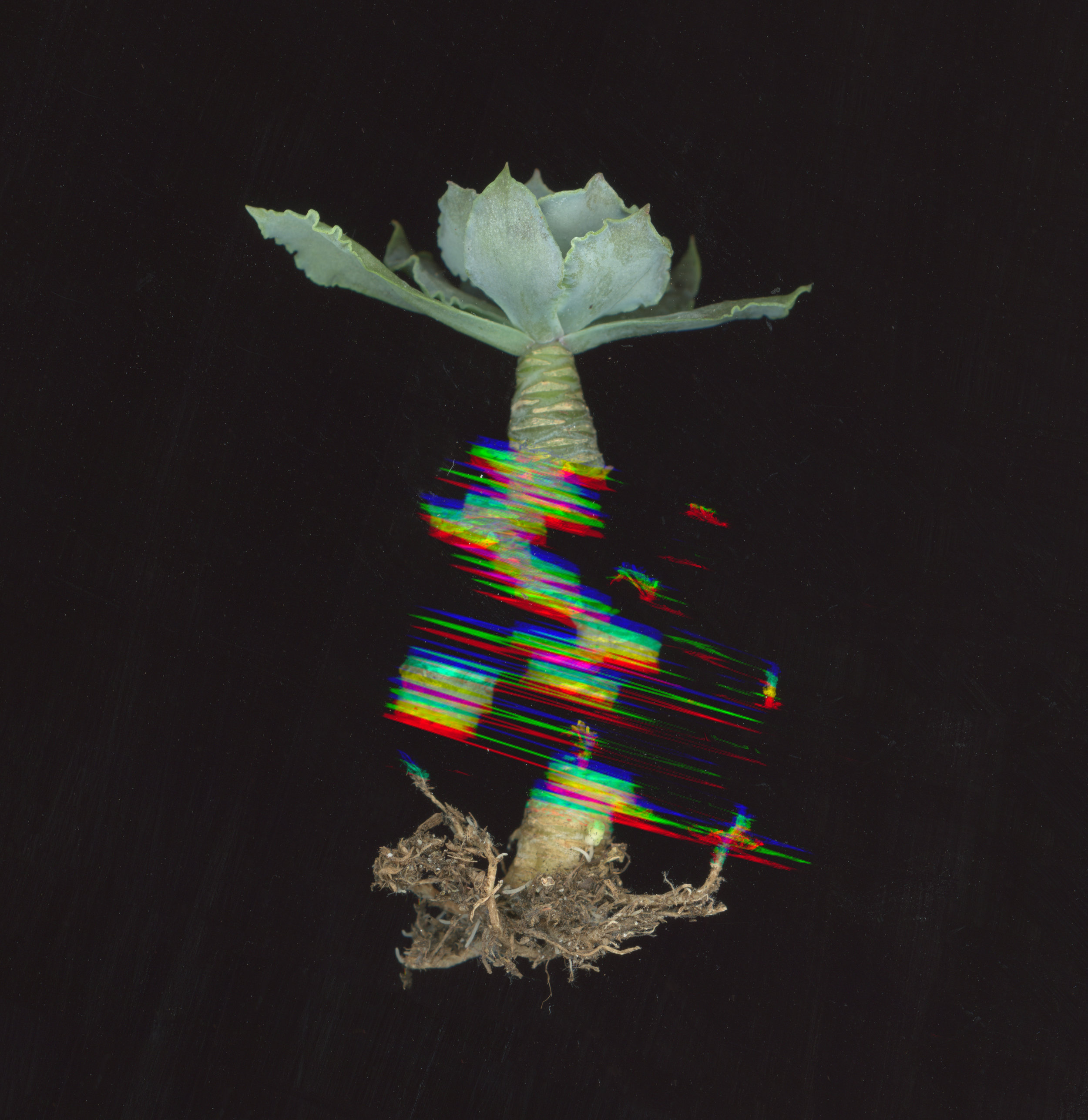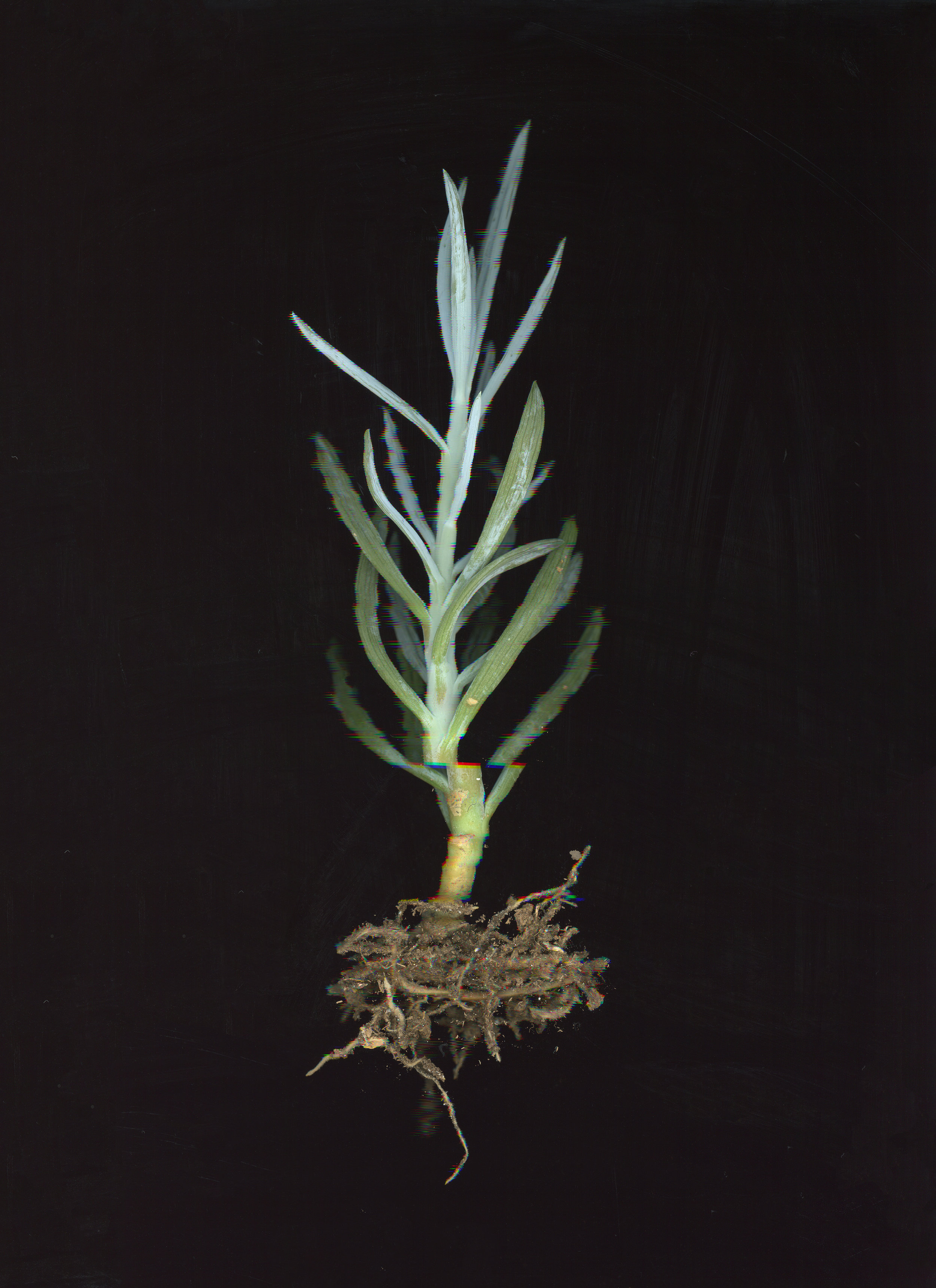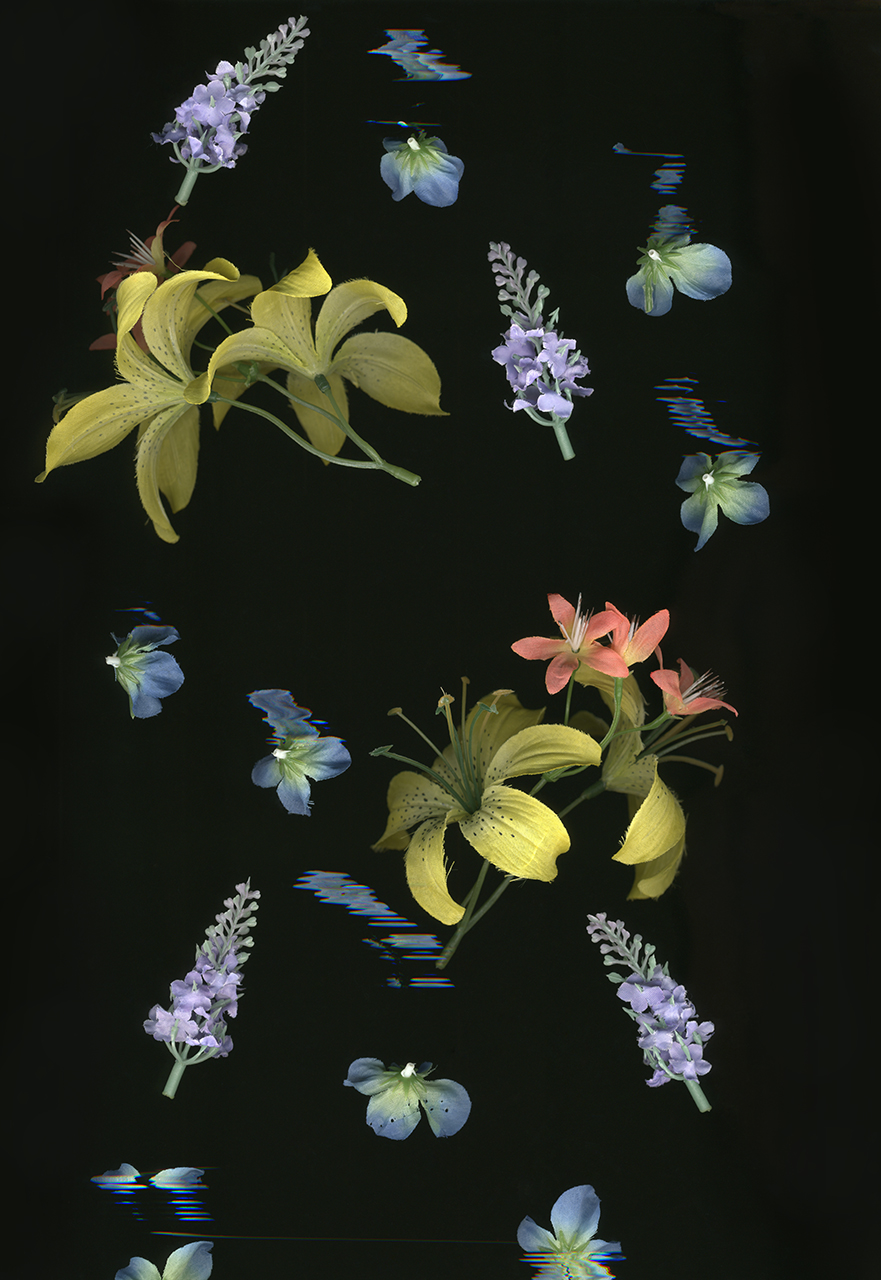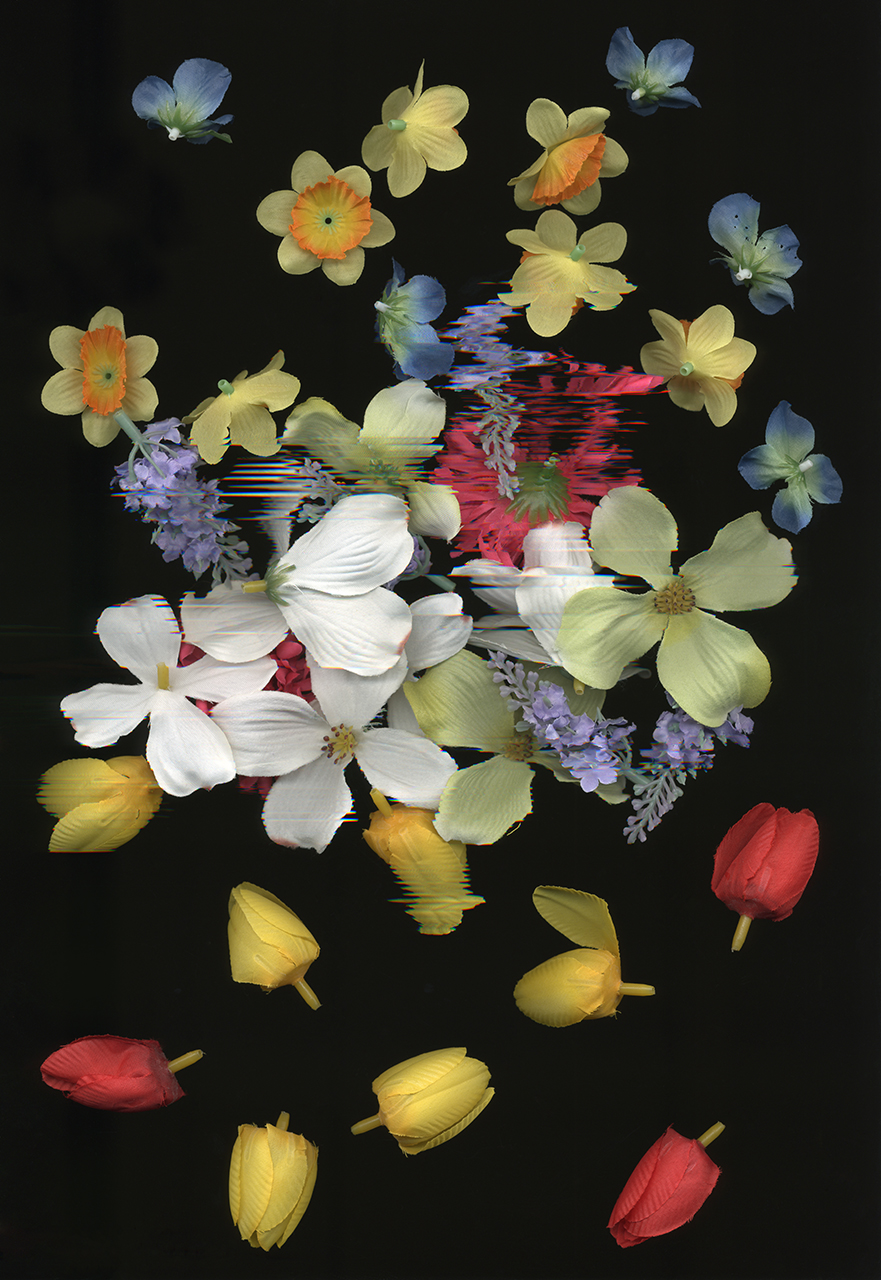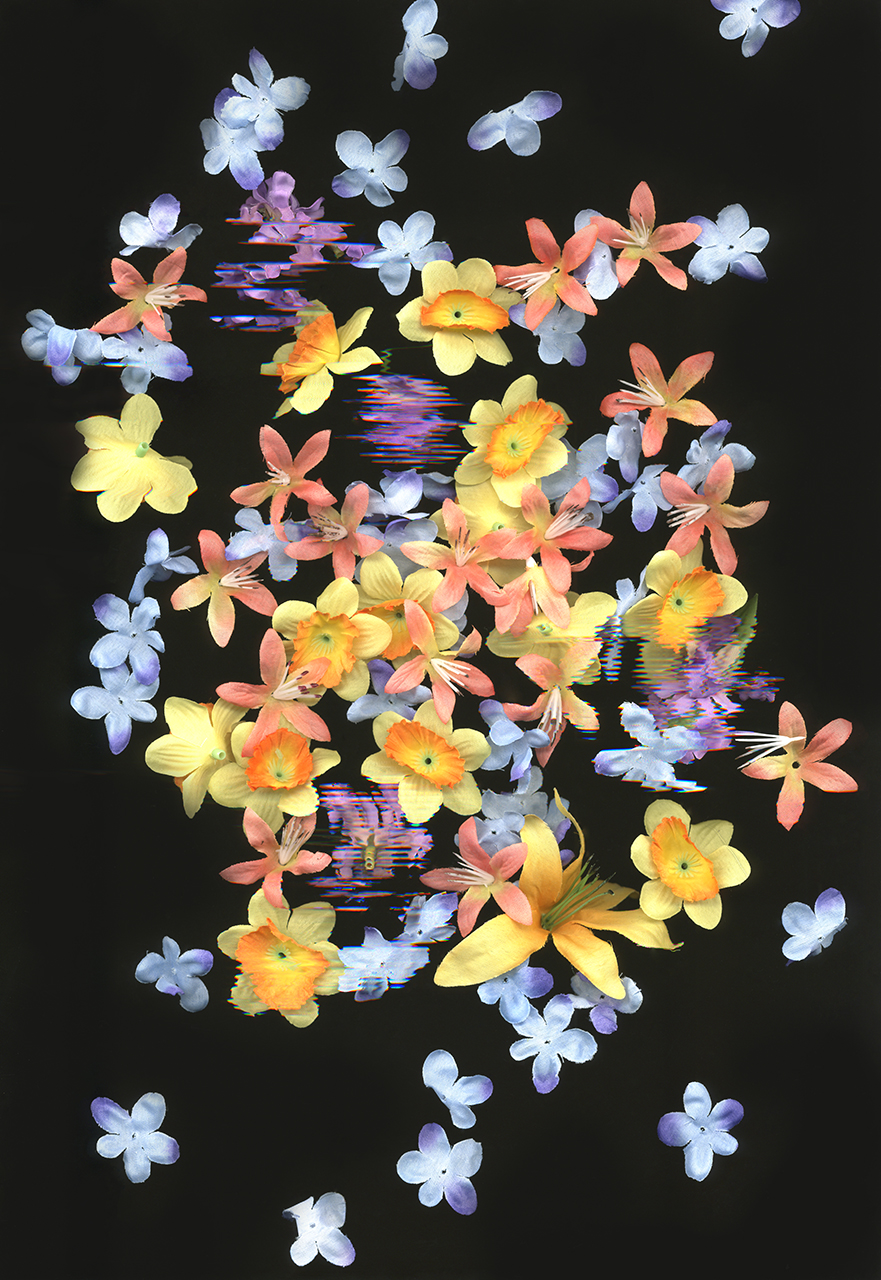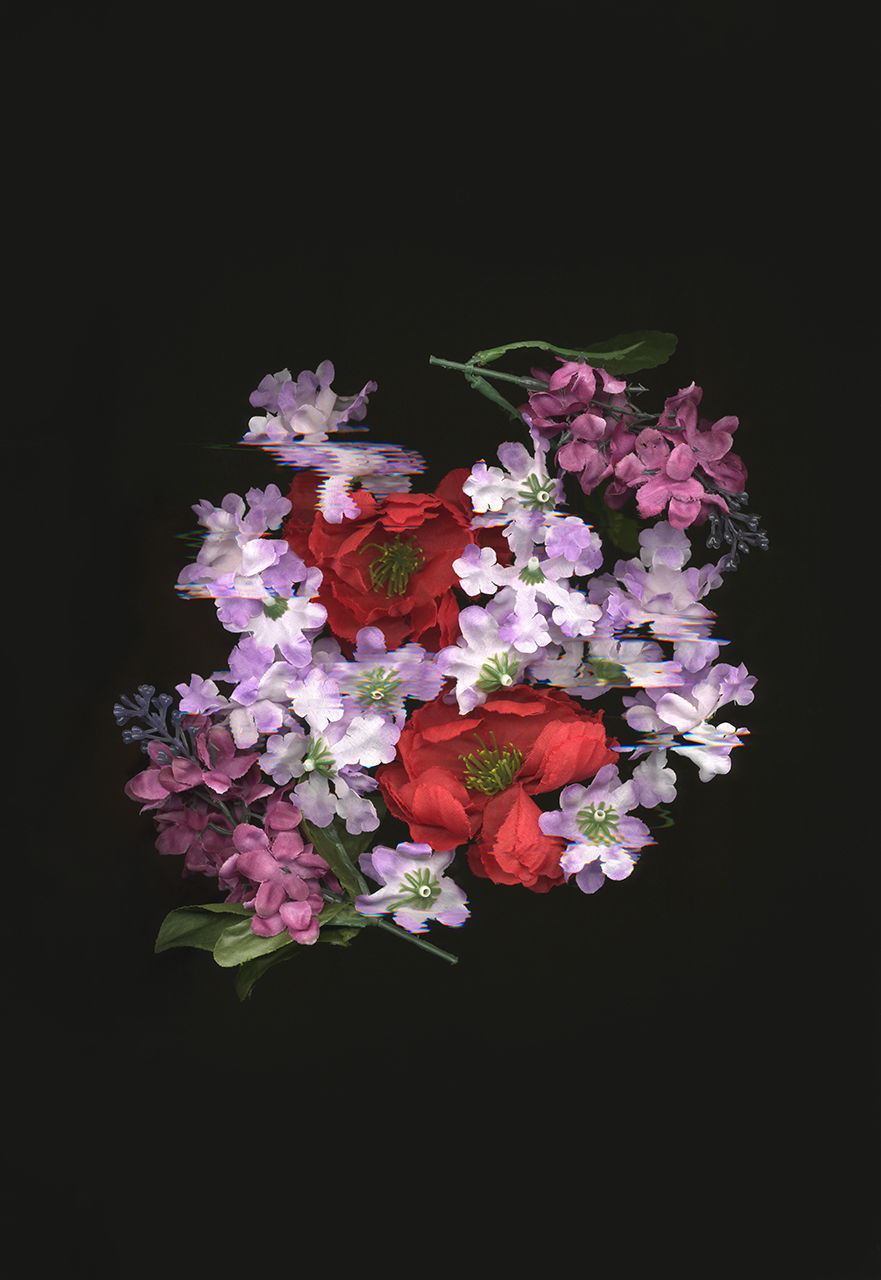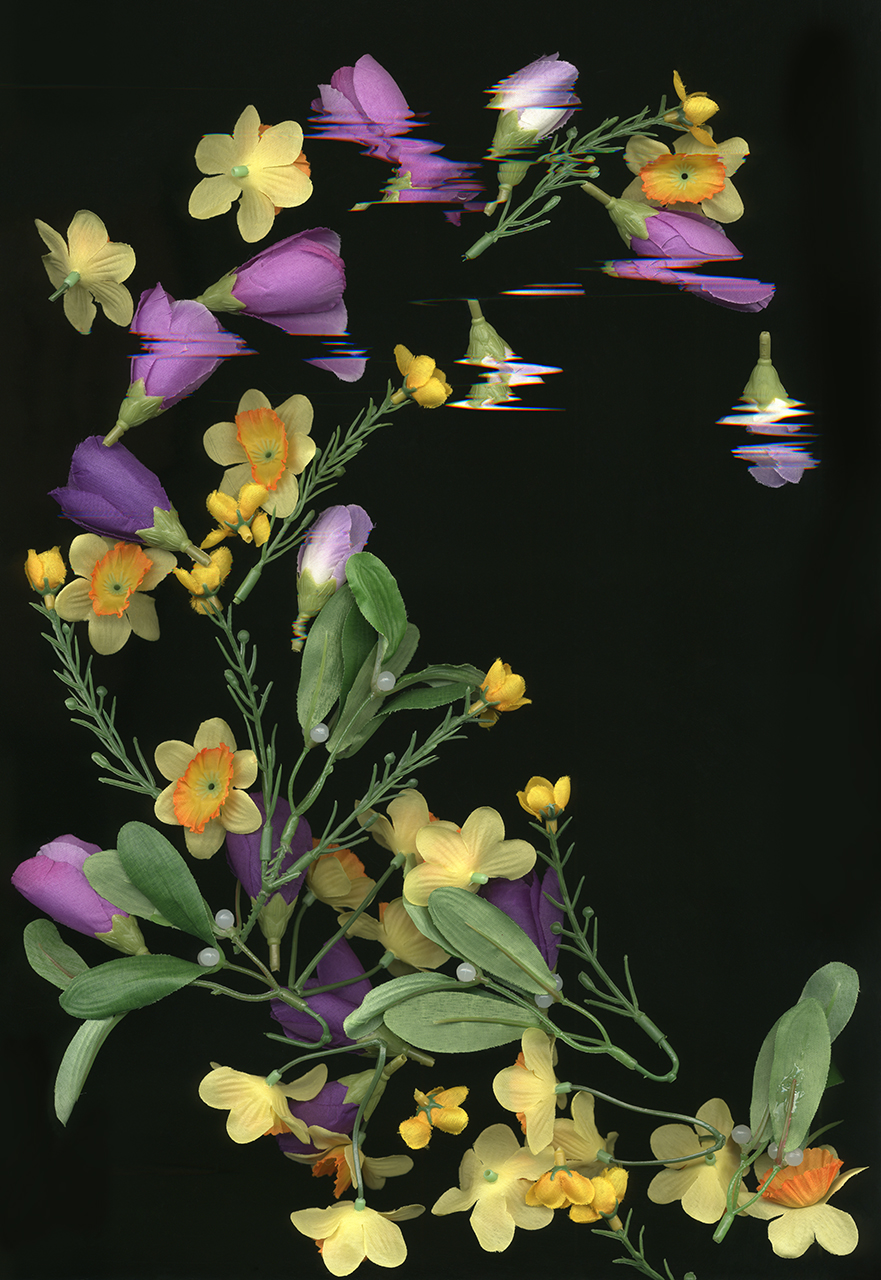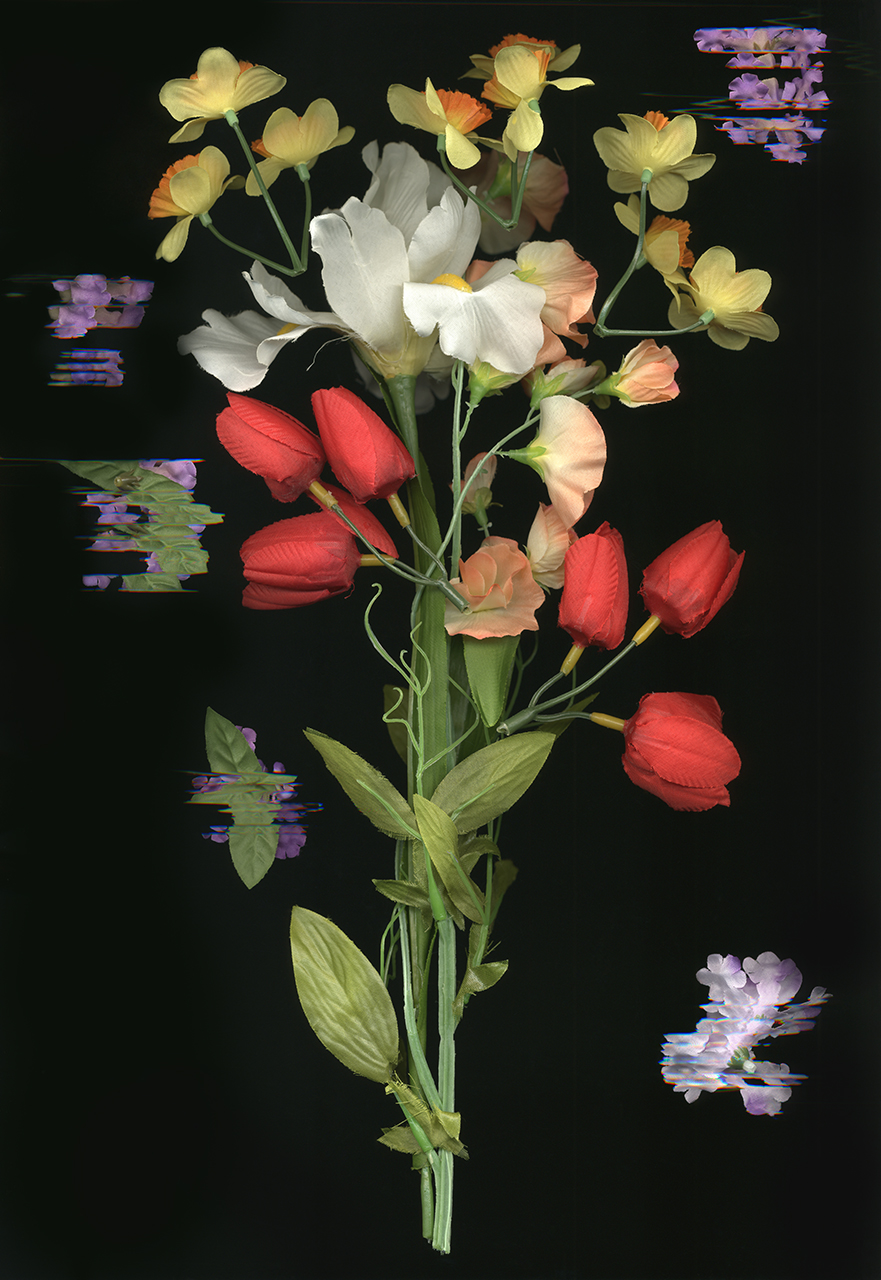TEMPORARY VISITATION
2018
Although this series is albeit very different than my scans, it maintains common themes in my work: imaginative landscapes and inaccessible worlds. While conducting research into underwater photography, I found myself reveling in the otherworldliness of water: full of graceful movements and mermaid-like forms. I found myself concentrating on capturing the moments I experienced underwater to show my above water brethren and needing to interrupt myself with coming up for air. How beautiful, that the world below water is entirely against our existence; how enticing that we can only stay a few minutes before running back to our normal reality of oxygen. I’ve dreamt of figures and forms floating ever since I can remember and being able to record those images in real time for others to view later is an exquisite experience. I am, once again, able to present a visual for others to relate to and experience, giving my memories and imagination the validity I feel they deserve.
AGAINST THE WIND
2017
Scanning, inherently, is a means of composing seconds and minutes together into a singular, two-dimensional object. That object is born from the combination of three-dimensional life and the passing of time: it is a recording; a documentation. The scanner slices and rearranges time into a flat visual that represents the backside of the scanner’s view; the recording is evidence of time passing. This series is a documentation of the swaying of trees in my mother’s communal backyard. With an extremely long extension cord, I brought my scanner outside for the first time to document the leaves waving in the wind, literally leaving my comfort zone of the indoors for new, undocumented territory. The scanner recorded the leaves as they were presented in that moment and continued to record their new location over and over again as the breeze shifted their positions until the scanner reached the end of its flatbed. I was attempting to utilize this machine to stitch together various moments into a story of where the leaves traveled that evening.
DETACHMENT
2016
The labor of creating the project Detachment is just as important as the finished images. During the summer of 2014, gentrification displaced my mother, my sister, and me from my childhood home. We had to move in with my sickly grandmother a couple of towns away. A month after the move, we had to put our dog down; two months later, my grandmother passed away from lung cancer. These were difficult months, but I am grateful that we were present to offer care and support to my grandmother and that I was able to spend so much time with her before she passed. The day after my grandmother died, my extended family forced us to move from her house and into an apartment. Once again, I had no sense of place. I felt exposed and vulnerable to the wrath of life, like plants that are continuously susceptible to being uprooted and displaced by human habitation, carelessness, and a desire for a particular kind of landscape design.
I began work on Detachment after I came upon a plant that had frozen to death. I placed the pot in a microwave oven to warm the dirt, uprooting the poor soul from its soil. Its roots were lifeless so I exposed them to the blinding light of my scanner. I had found my new work. During our stay at the apartment, I had begun to collect some small succulents. When they started to overcrowd their pots, I gathered materials to repot them, and used my scanner to expose their roots. Each plant took its turn being ripped from its claustrophobic home, shaken to remove excess dirt, dragged across the glass of the scanner to be dissected by time, and placed into a new, foreign pot. After moving from the apartment to a condo two years later, I scanned my plants again. Some had not survived their initial journey across the flatbed, and some thrived from the exposure. The whole process is very violent and risky for the plant. However, with new surroundings comes the opportunity for new growth, new life. The scans themselves are evidence of growth, decay, survival, exposure, and risk.
LOVES ME, LOVES ME NOT
2015
Loves Me, Loves Me Not is a series of ten 16x24” highly reflective Chromaluxe prints of scanned artificial flowers, some of which were moved as the light passed underneath for a glitching effect. The project explores artificiality, mass production, mirroring, manipulation, and technology; the flowers conveying a sense of a perfect world disturbed by the glitches. Each image has a vibrancy and beauty evoking both a sense of timelessness and otherworldliness. Their dark backgrounds create a highly reflective surface, making the images difficult for the viewer to enter. The surface therefore functions as a plane: a portal looking into a domain of artificial perfection, full of beautiful colors and textures. The reflection of the viewer imposed onto the metal presents an idea of inaccessibility relating to the notion that, as humans, it is essentially impossible to fully relate to and understand one another.

